Qalb Lozeh قلب لوزة
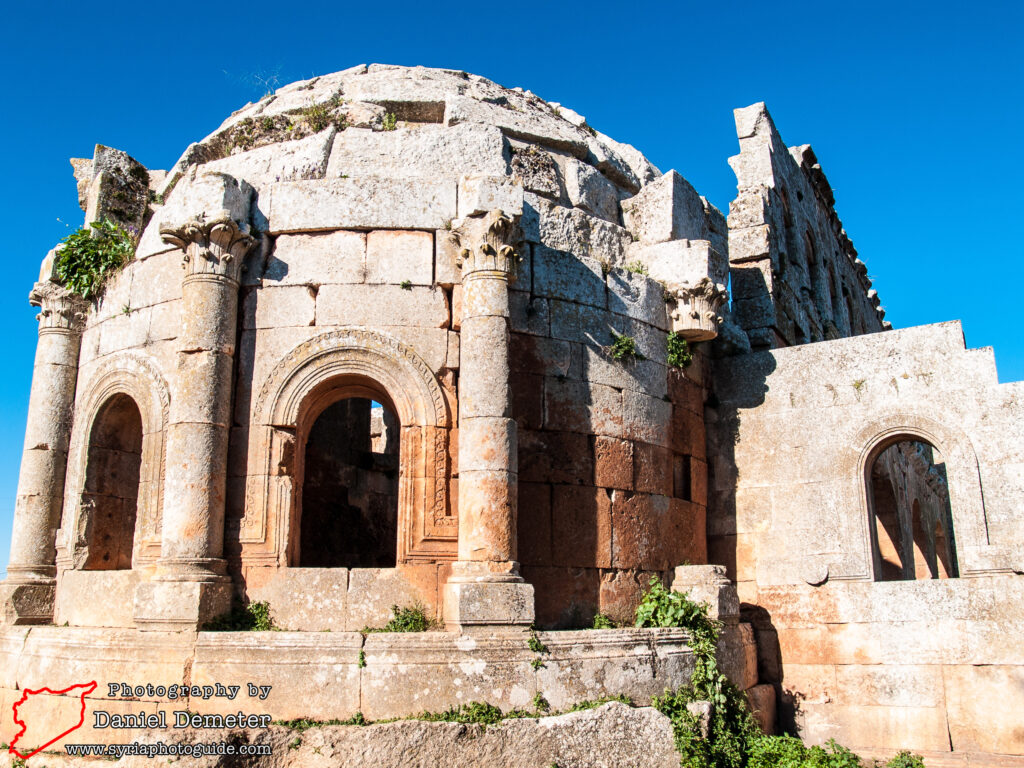
The most well-known monument in the region of Jebel al-Aala (جبل الأعلى) is the fascinating church of Qalb Lozeh (قلب لوزة). Though there are earlier churches which survive in reasonable condition, this is the first example which realizes, on a monumental scale, the Syrian model of the broad-aisled basilica church. It anticipates the bold project at Qalaat Samaan (قلعة سمعان), near Aleppo (حلب), and its decoration is of the same order of sophistication. It well represents the development of a Syrian architectural style as an offshoot from Byzantine models, and anticipates many of the features which were to find their way eventually to Europe in the Romanesque period, such as the entrance arch and flanking towers.
The church is the only ancient remain which survives in this small Druze mountain village. On the western end of the church is the main entrance, with three floor towers flanking each side. These towers once framed a huge semi-circular arch topped by a terrace, but only the footings of the left of the arch survive. Behind is the entrance doorway where the arch theme is continued, relieving the weight of masonry above the door. Reconstructions of the main arch show how this bold effect brings to a climax several centuries of Syrian fascination with this device, seen also in the local adaptation of Roman styles in such centers as Tadmor/Palmyra (تدمر) or even the monumental arched entrance to the Temple of Jupiter (now the Umayyad Mosque) in Damascus (دمشق). The southern side of the church is marked by three decorated entrance doorways and the newly developed band of decoration flowing around the windows. The eastern end (behind the alter) reveals a semi-circular chevet which takes the apse out beyond the rectangular lines of the building. This too is a new development, as most Syrian churches embedded the semi-circular apse inside the outer rectangular shape of the building using complex and massive stonework to accommodate the incompatible shapes. The chevet is finished off by a device soon to be further developed at Qalaat Samaan (قلعة سمعان), the use of two tiers of colonnettes topped by a classical cornice to embellish the curved wall.
Today, the church is entered from the north side. Upon entering the church, the most dramatic aspect is the shape of the three sweeping arches which divide the central from the side aisles and once carried the clerestory and roof. This practice of substituting piers for columns, thus integrating the side aisles more fully with the nave, became a feature of later Syrian church building. To support the huge weight of masonry at the critical points relatively slim piers are used, but in later examples the piers become considerably more massive. The structure survives in a remarkable state of preservation, and even some of the stone roofing slabs of the side aisles are still intact. By providing the side aisles with a flat roof, the builders of Qalb Lozeh (قلب لوزة) allowed considerably more light to enter the church by the clerestory windows. The treatment of these windows is quite elegant, separated by small brackets and colonnettes which once supported the wooden structure of the roof over the main aisle. The semi-circular apse preserves intact its vaulted semi-dome and the choir in front (raised five steps above the level of the nave) is flanked by two side rooms (the prothesis on the left accessible to the faithful, the diaconicon on the right reserved for clergy). Particularly worth noting is the decoration framing the semi-dome of the apse, rising on each side from beautifully treated pilasters and capitals of almost classical simplicity. The overall effect is more harmonious than the over-achievement which later churches strived for, often heavy-handedly mixing styles and shapes with ungainly effect.
The dating of the church has been much debated in recent decades. One prominent researcher of the “dead cities” had dated the church to around 480. A later expert on these sites argued that by comparison with the nearby dated church at Beitar (بيتر) to the north, Qalb Lozeh (قلب لوزة) must have been built before 469. Most likely, he felt, the church was built during the lifetime of Saint Simeon (who died in 459) or immediately after. Many aspects of the Qalb Lozeh (قلب لوزة) basilica were repeated, often in a more refined way, at the great quadruple basilica erected on the site of Saint Simeon’s column, probably after 475. Except for a few olive trees, the village consisted of little but the church, there being no sizable patches of arable land on the limestone ridge. The fact that the church was surrounded by a walled compound supports the likelihood that it was intended not to serve a village, but to provide a stop for pilgrims, perhaps those bound for the already flourishing pilgrimage center at Deir Samaan (دير سمعان), at the foot of Saint Simeon’s pillar. Whatever the explanation, clearly a number of influences came together on this site with an unusually productive blending of metropolitan and local Syrian influences, most likely inspired by the pilgrimage role.
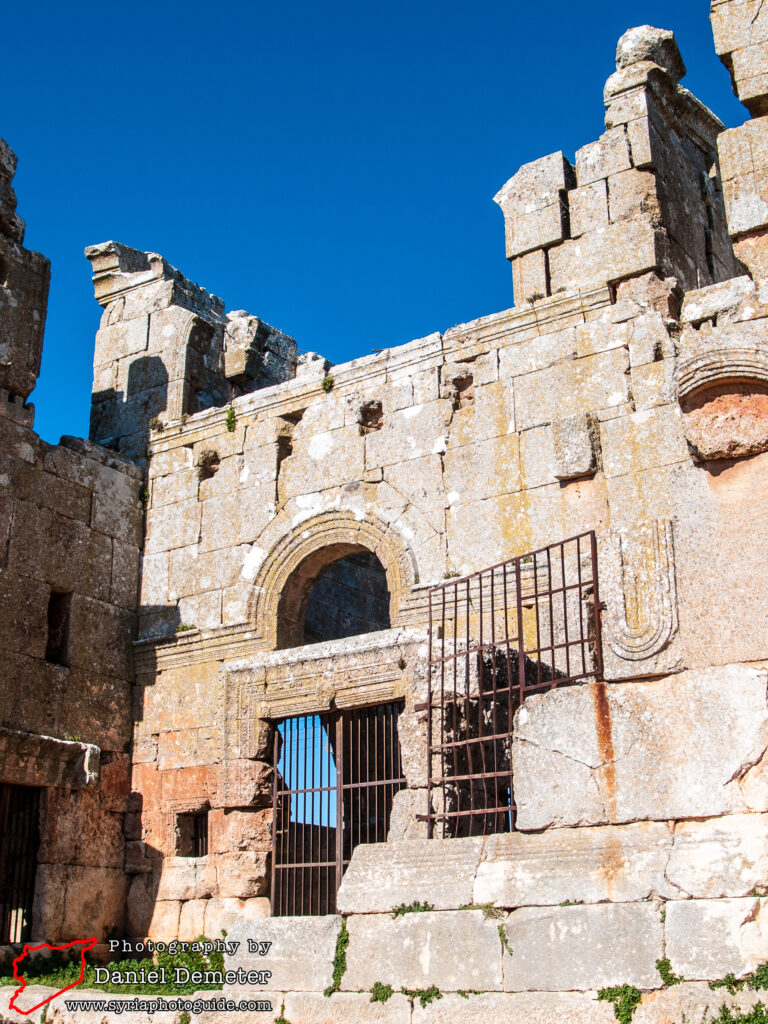
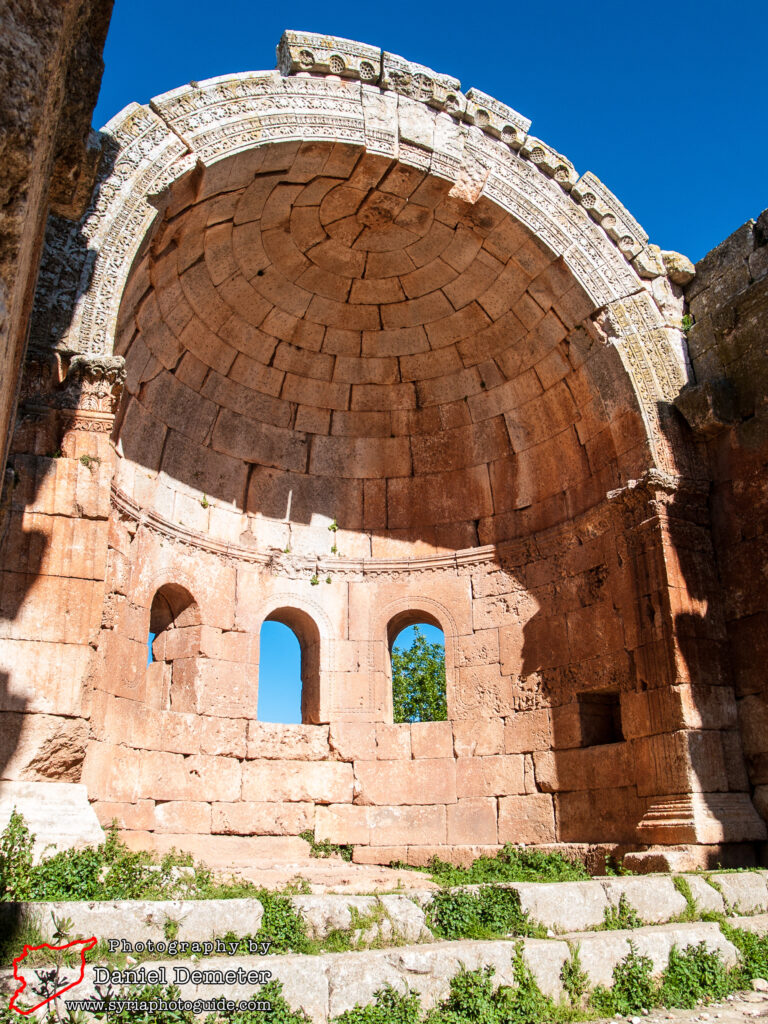

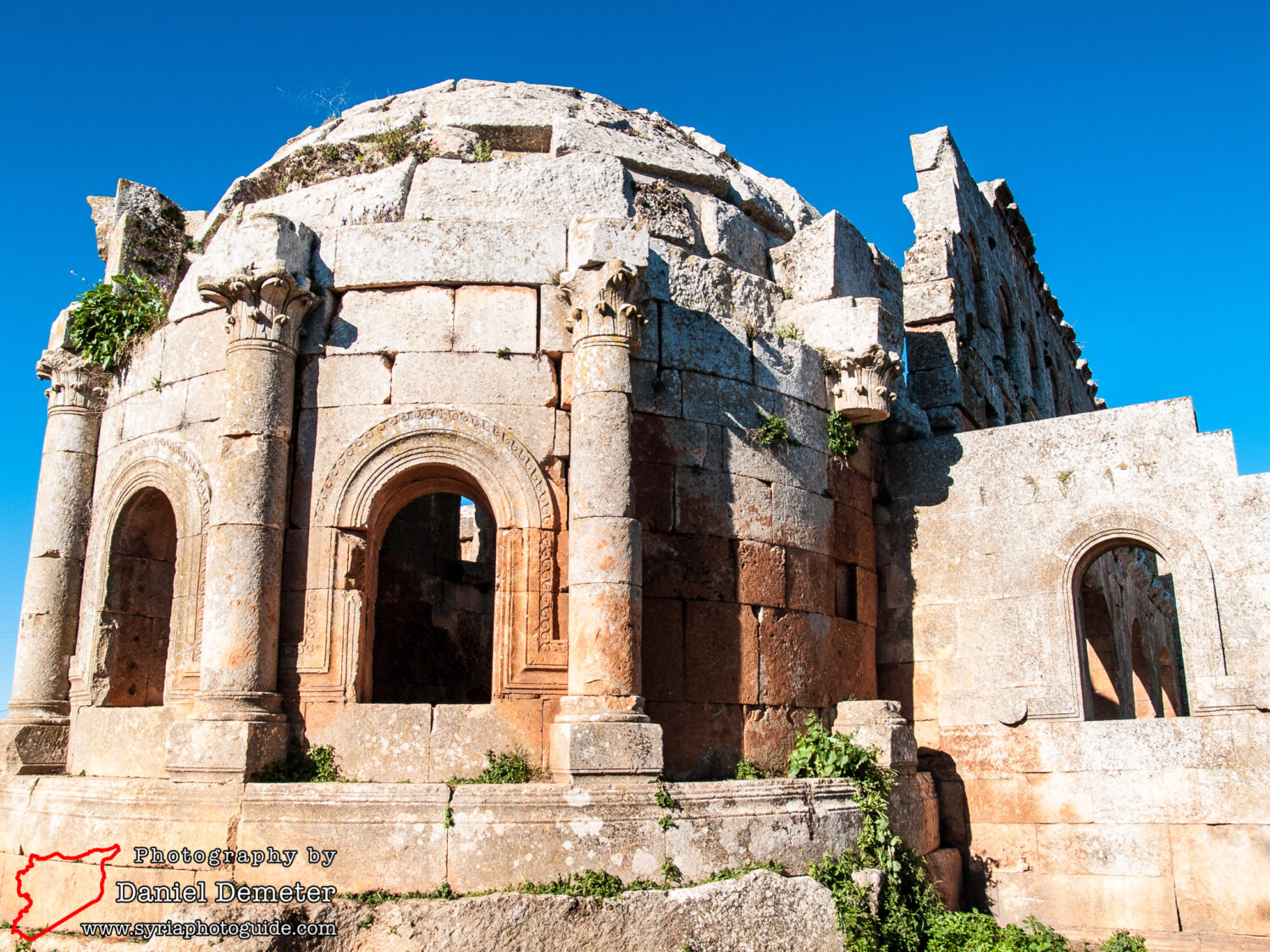
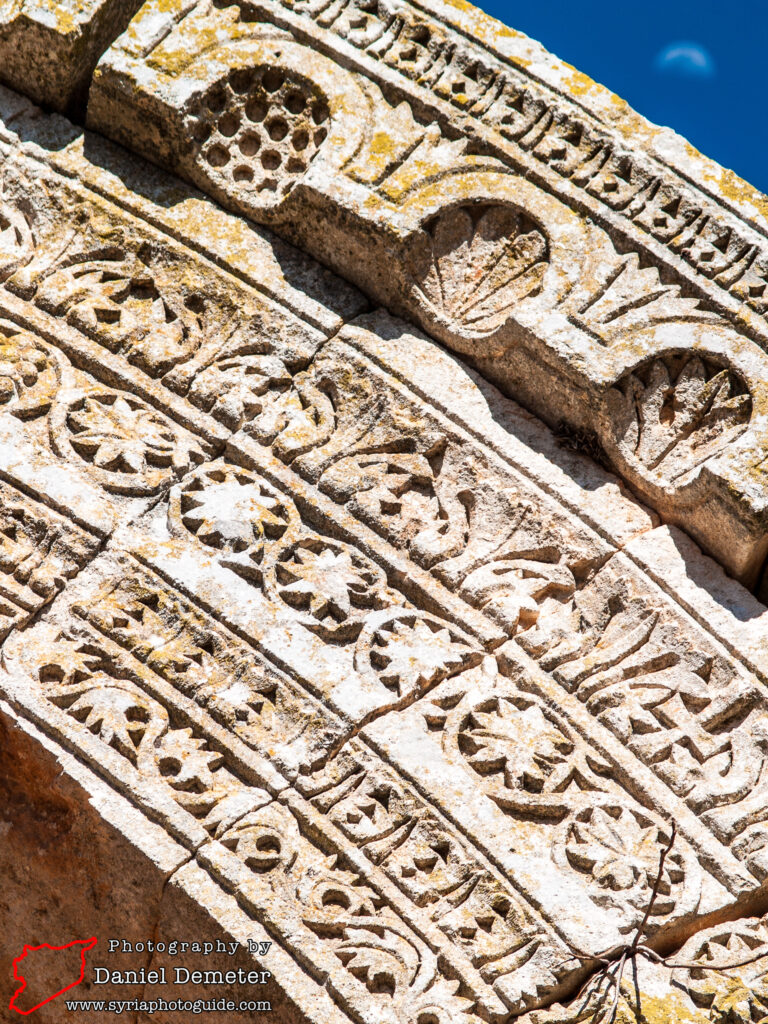
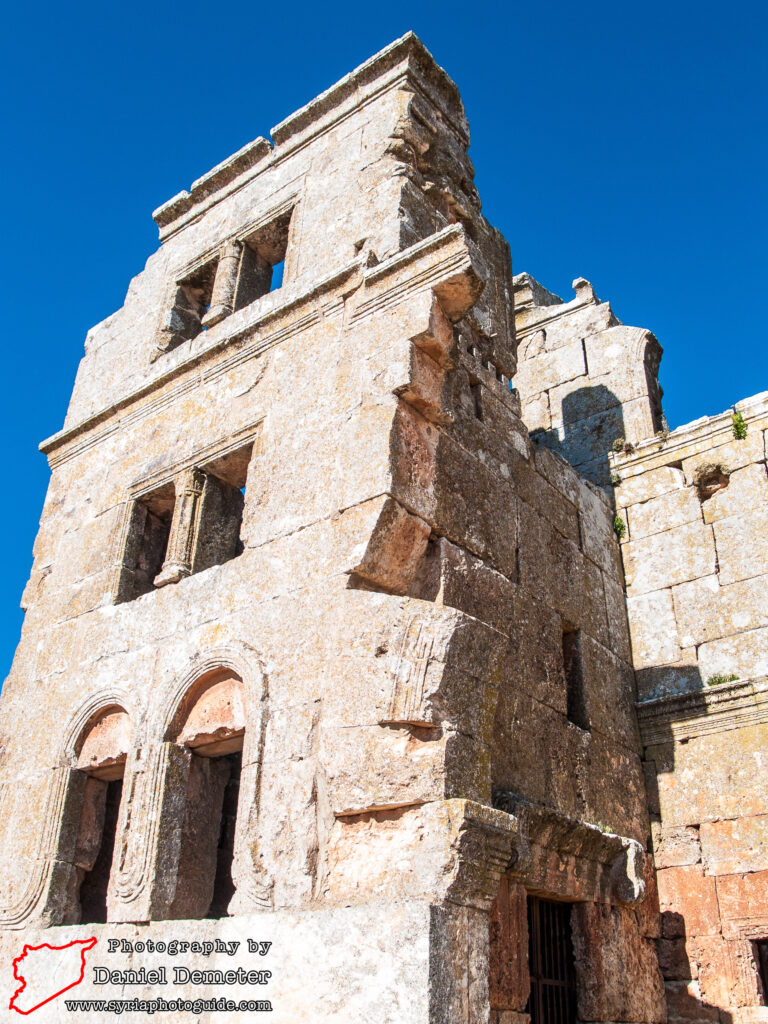
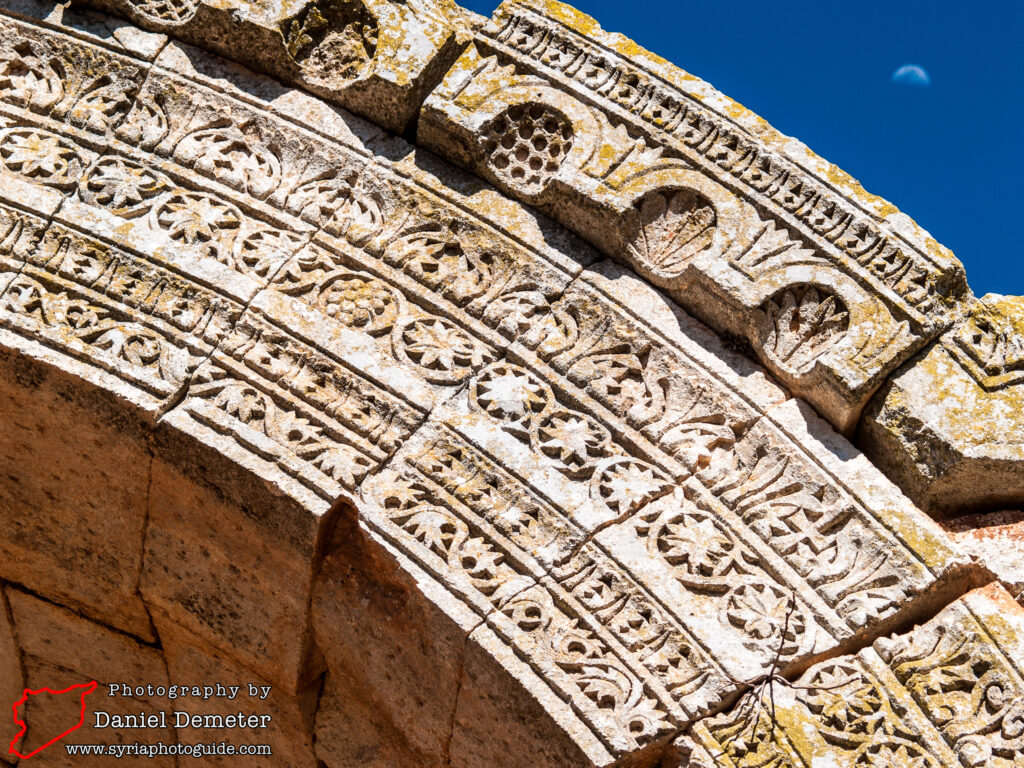
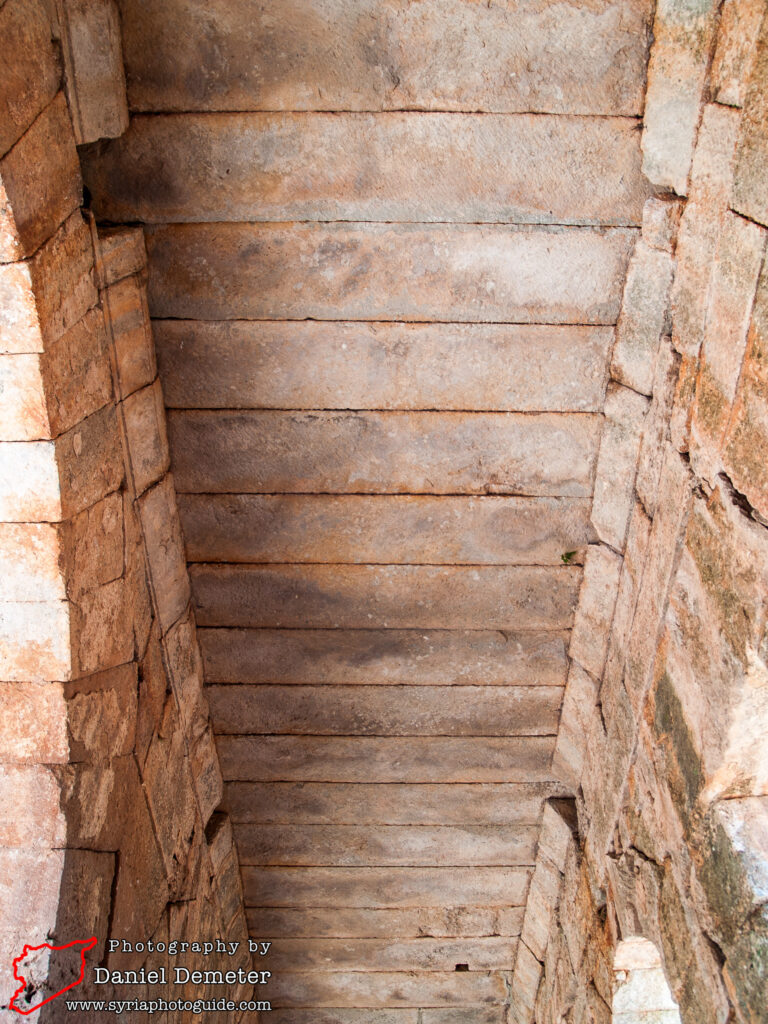
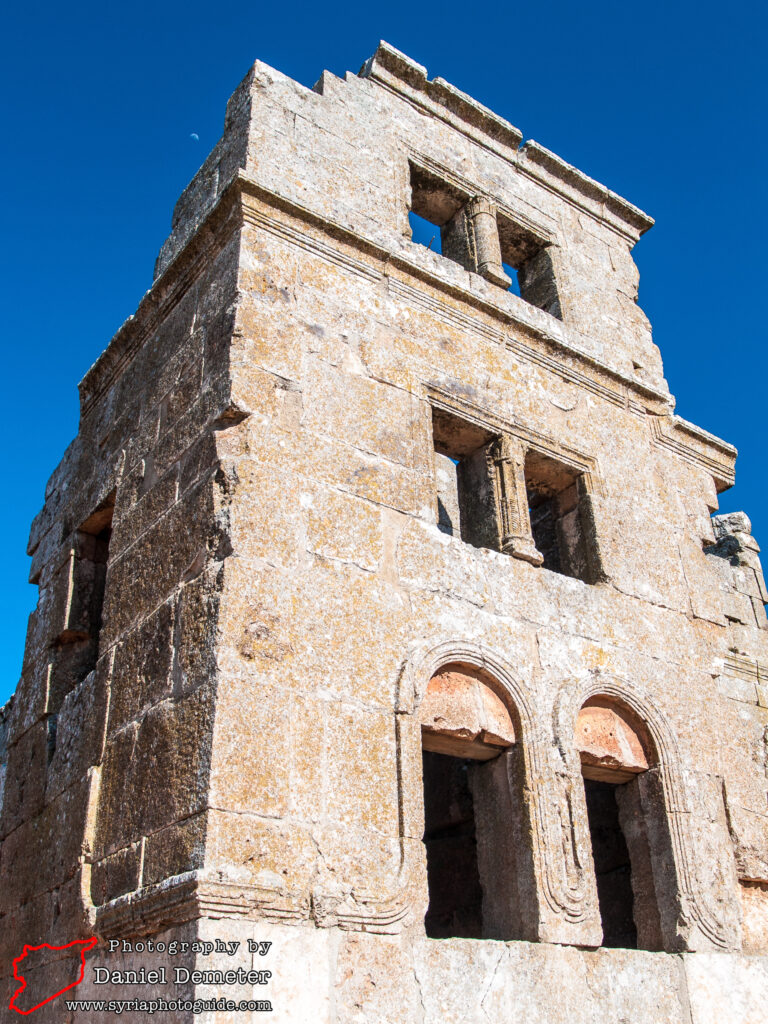
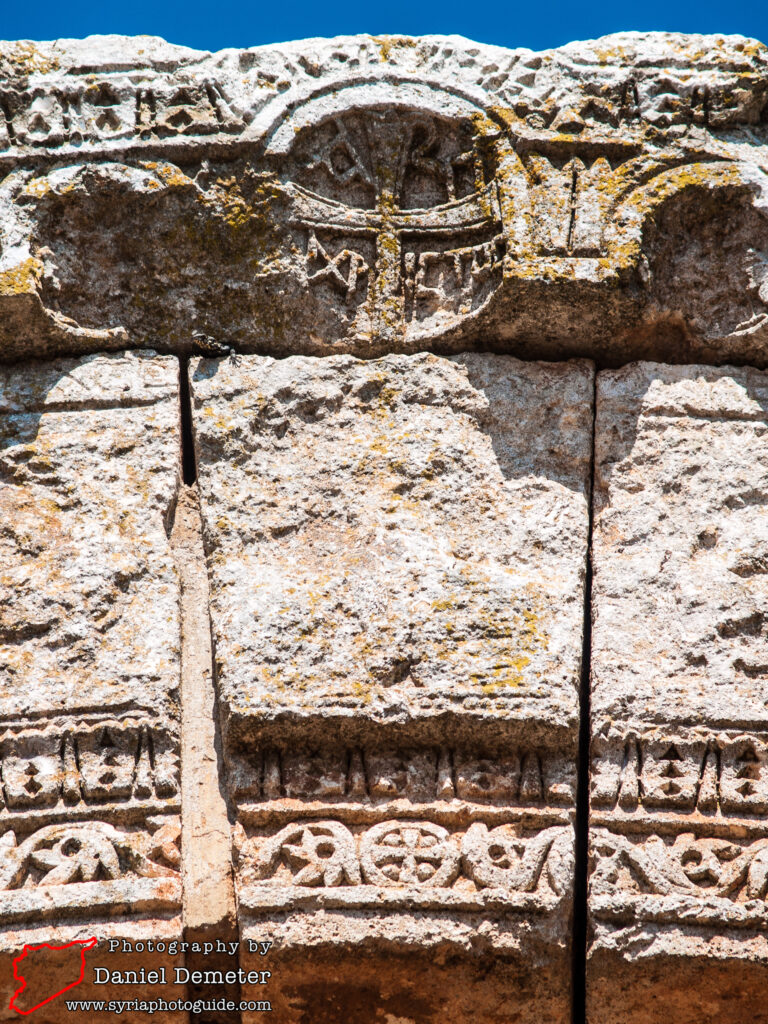
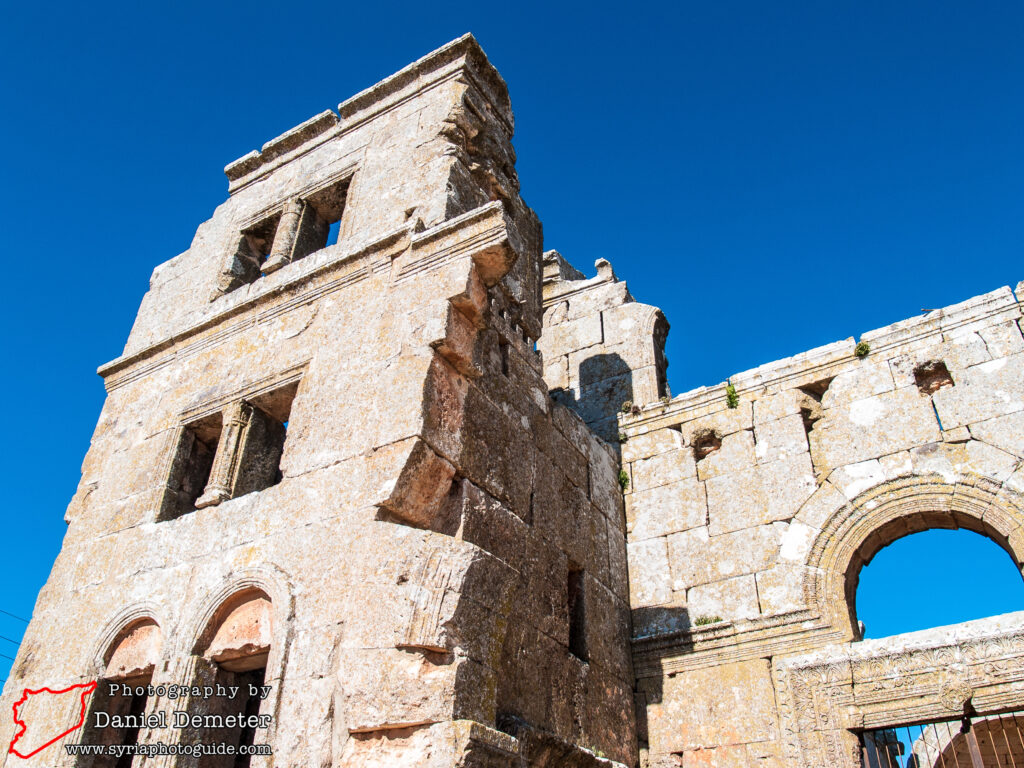
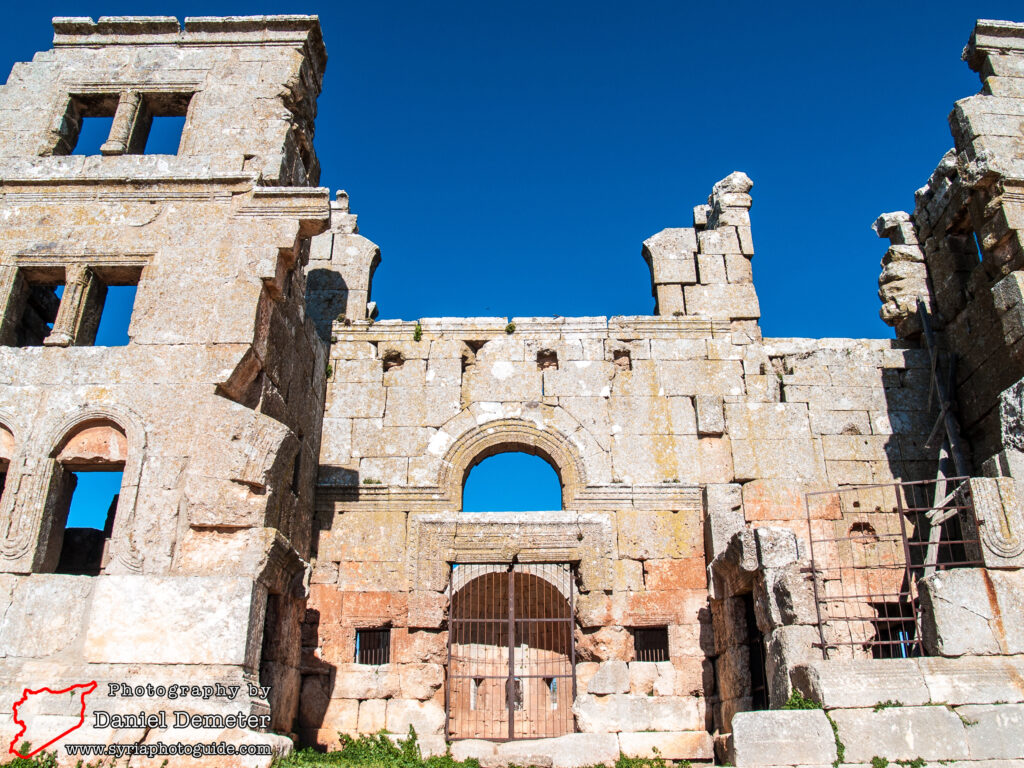
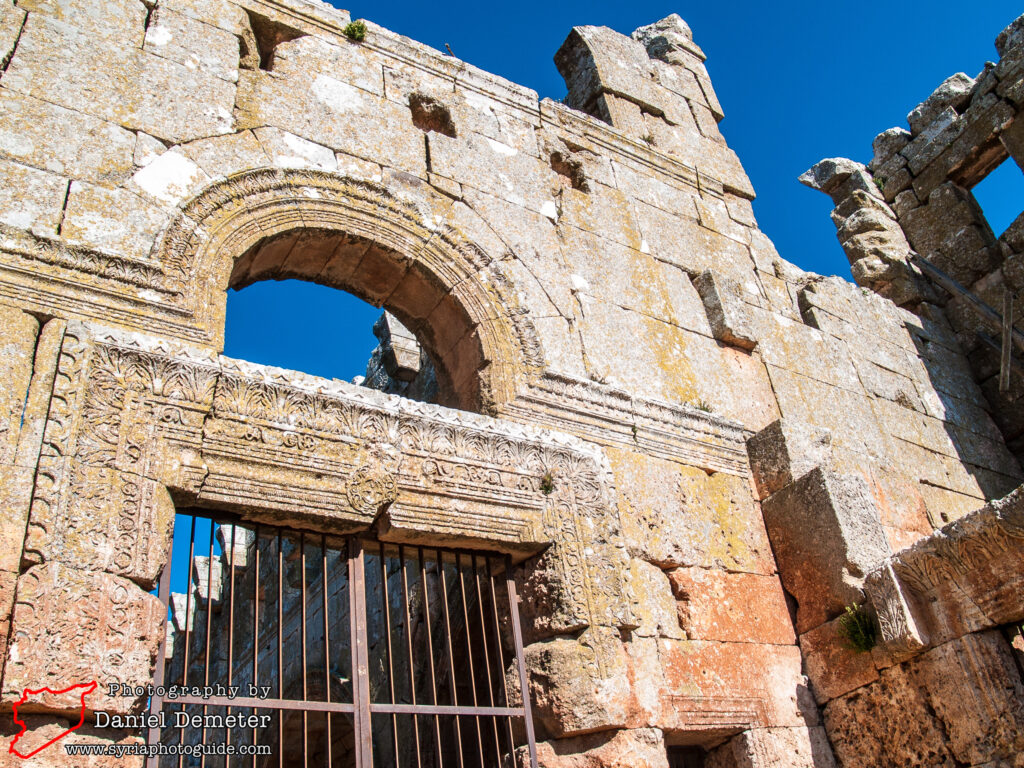
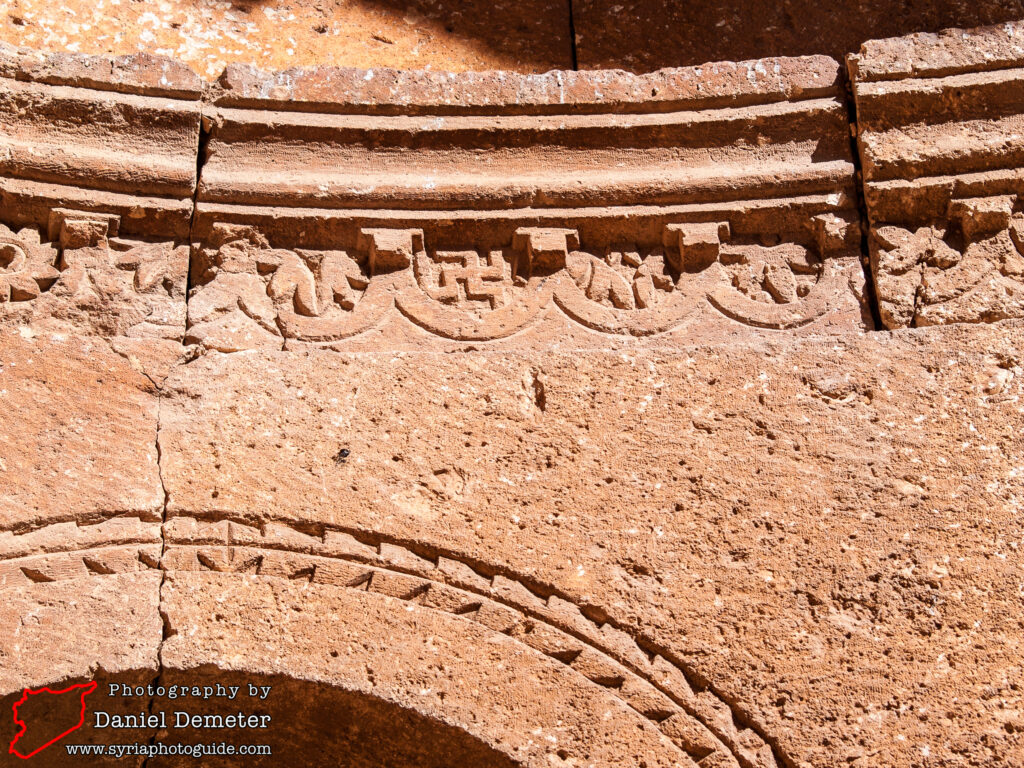
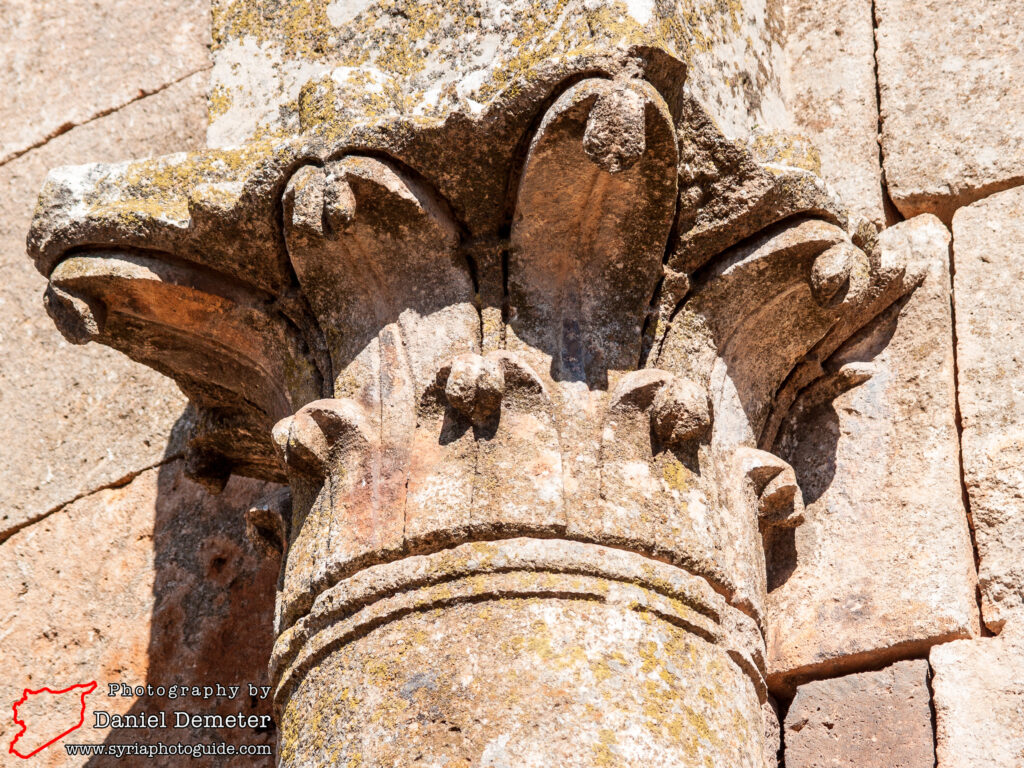
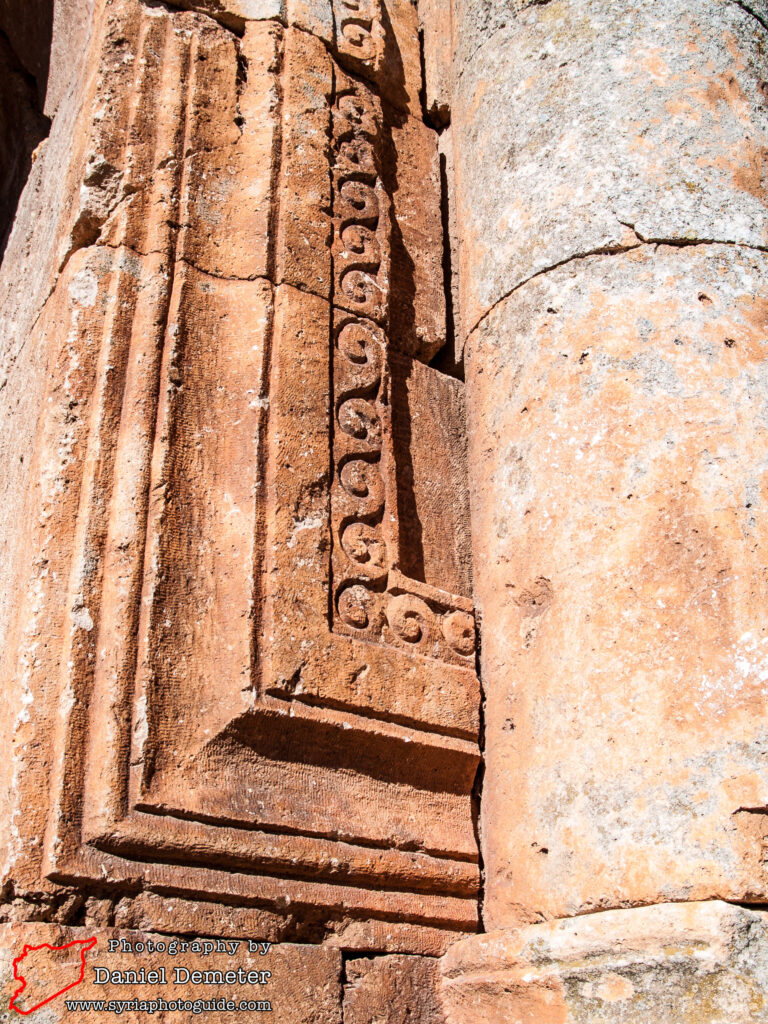
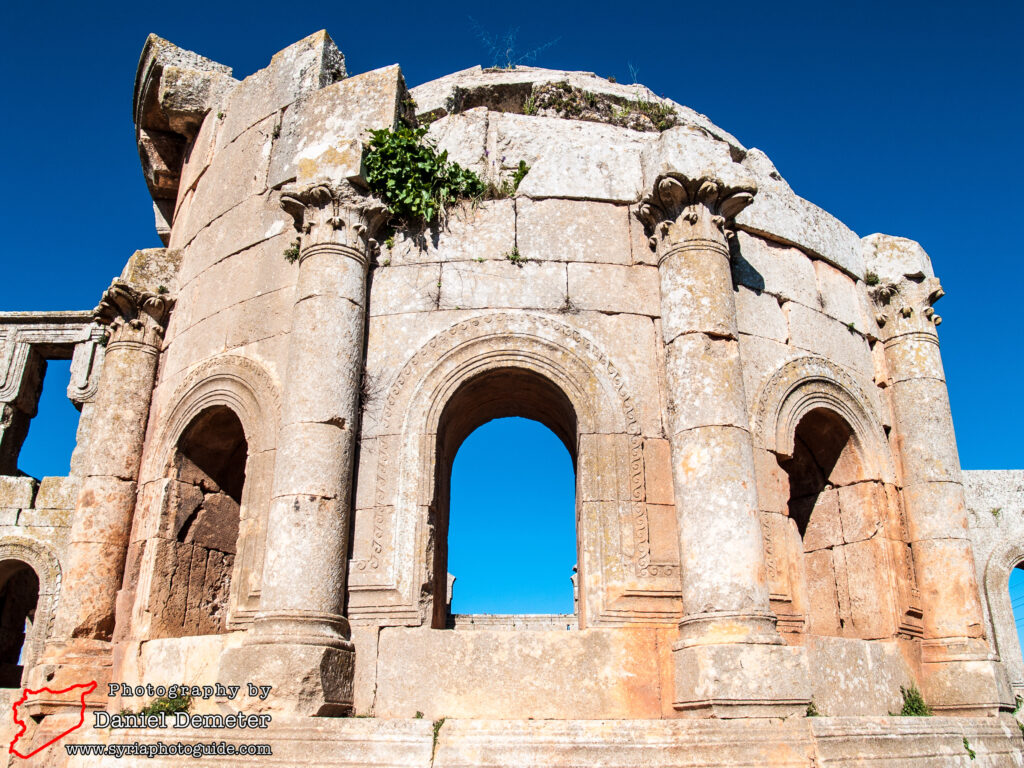
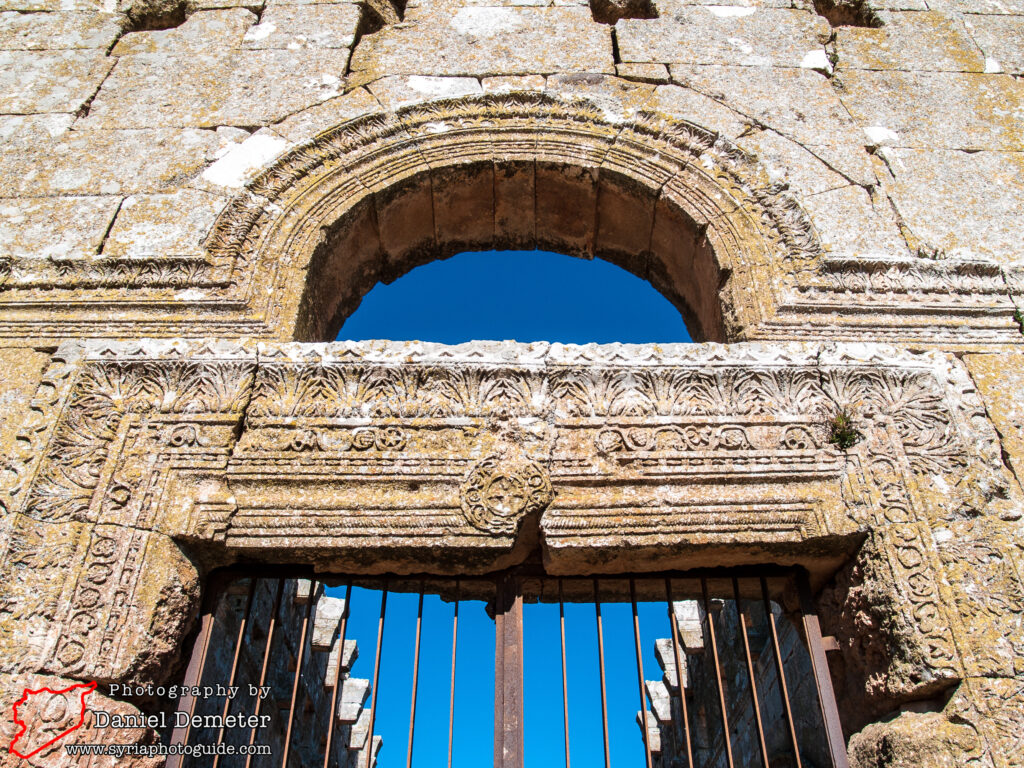
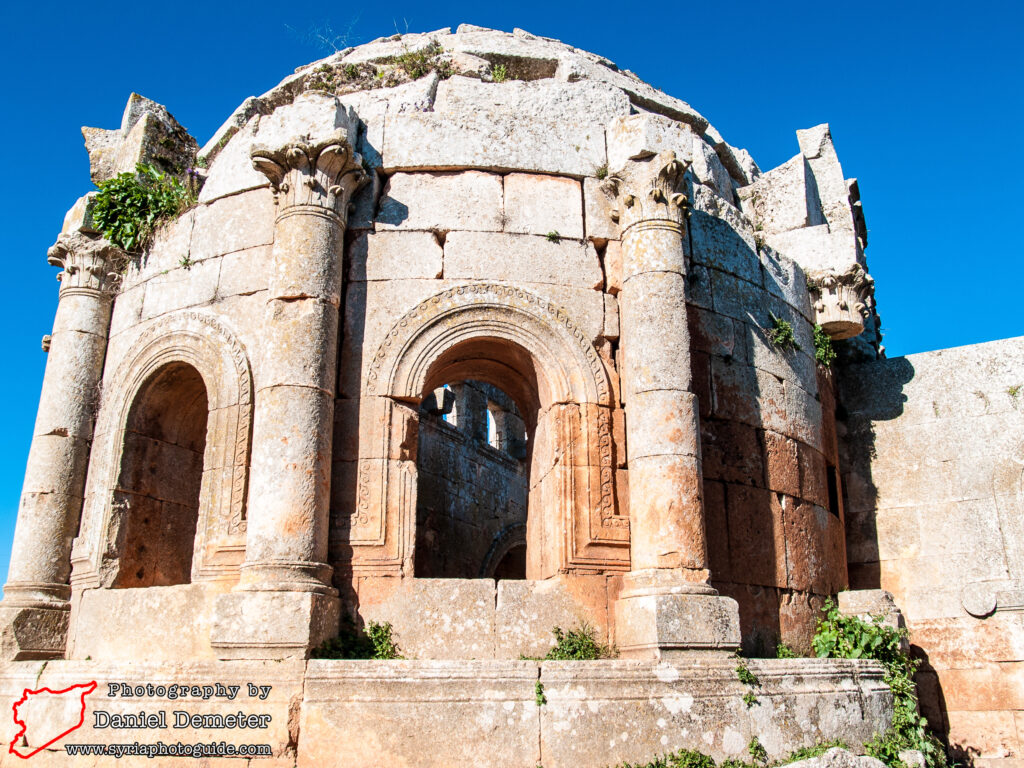
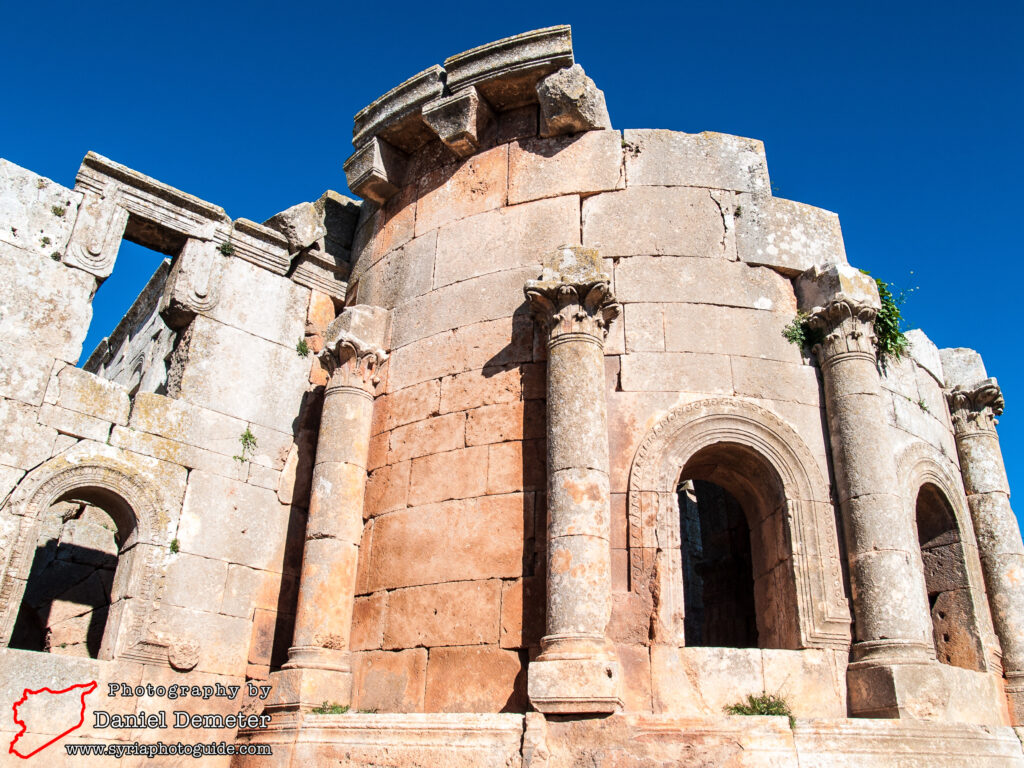

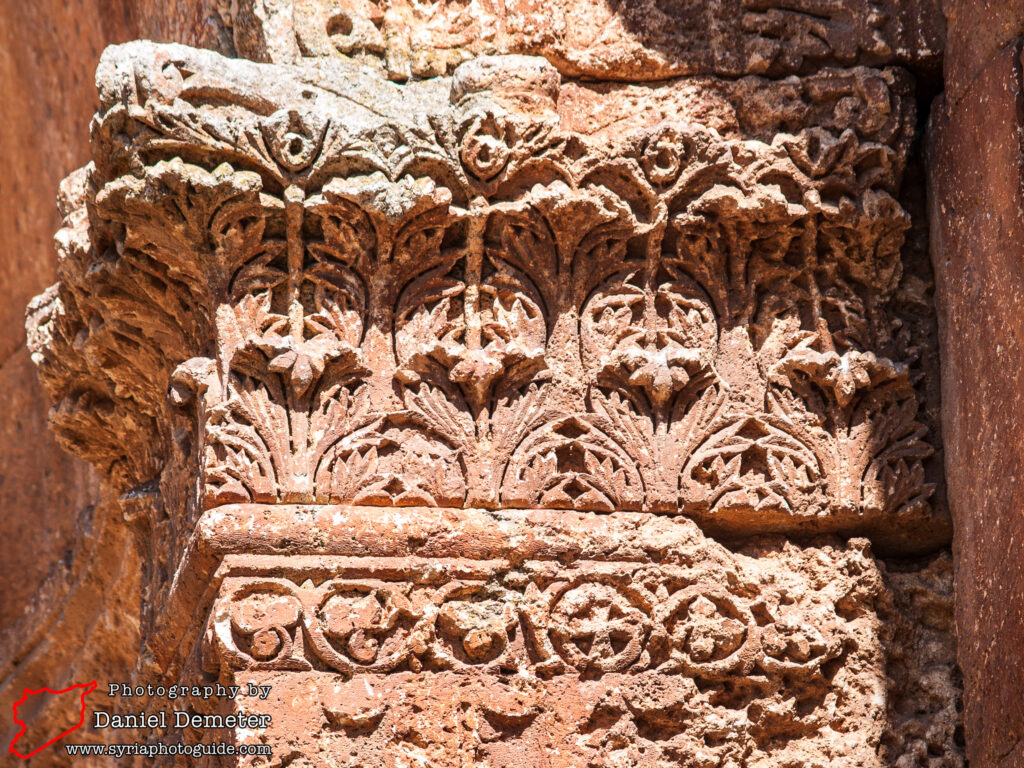
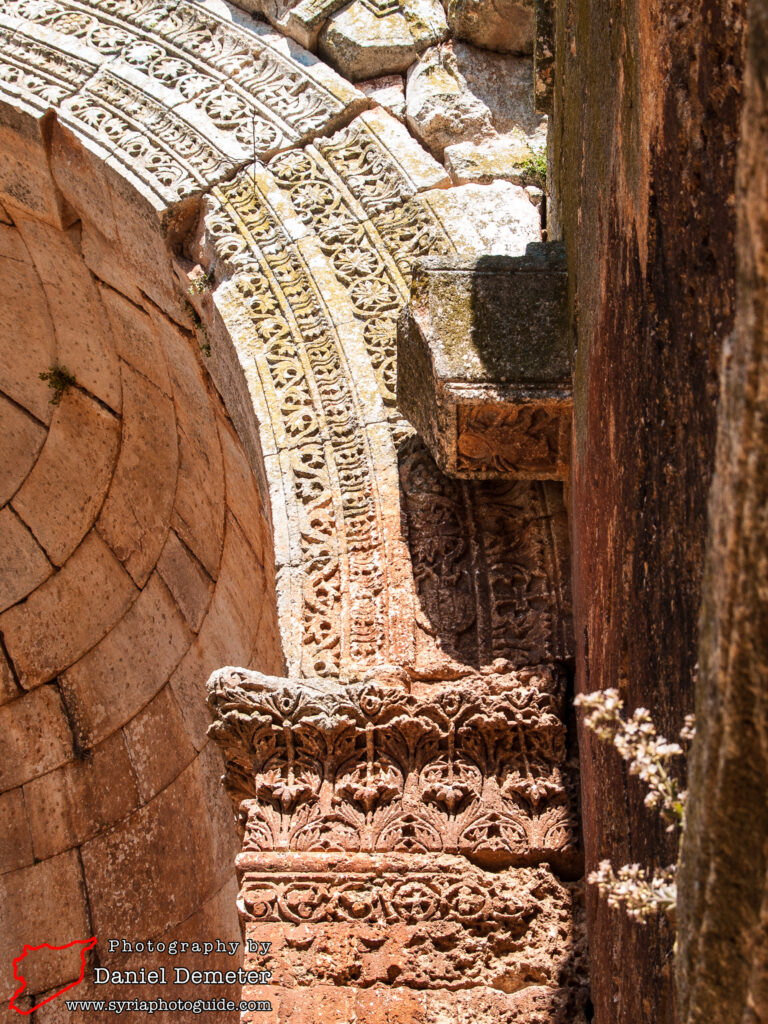
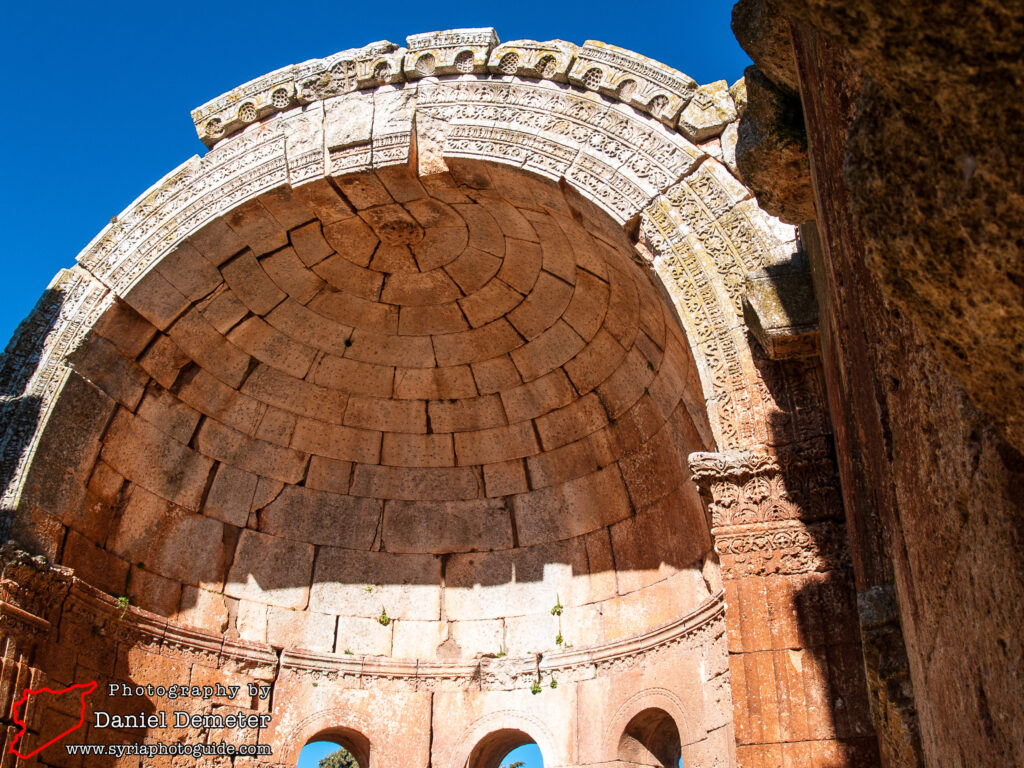
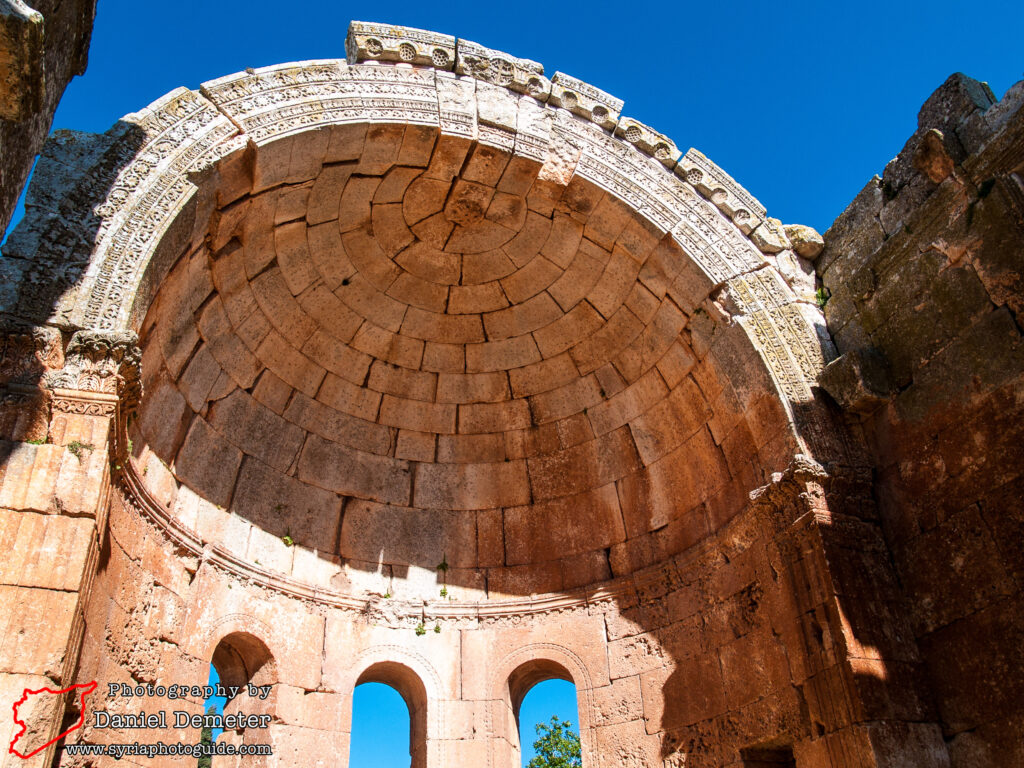
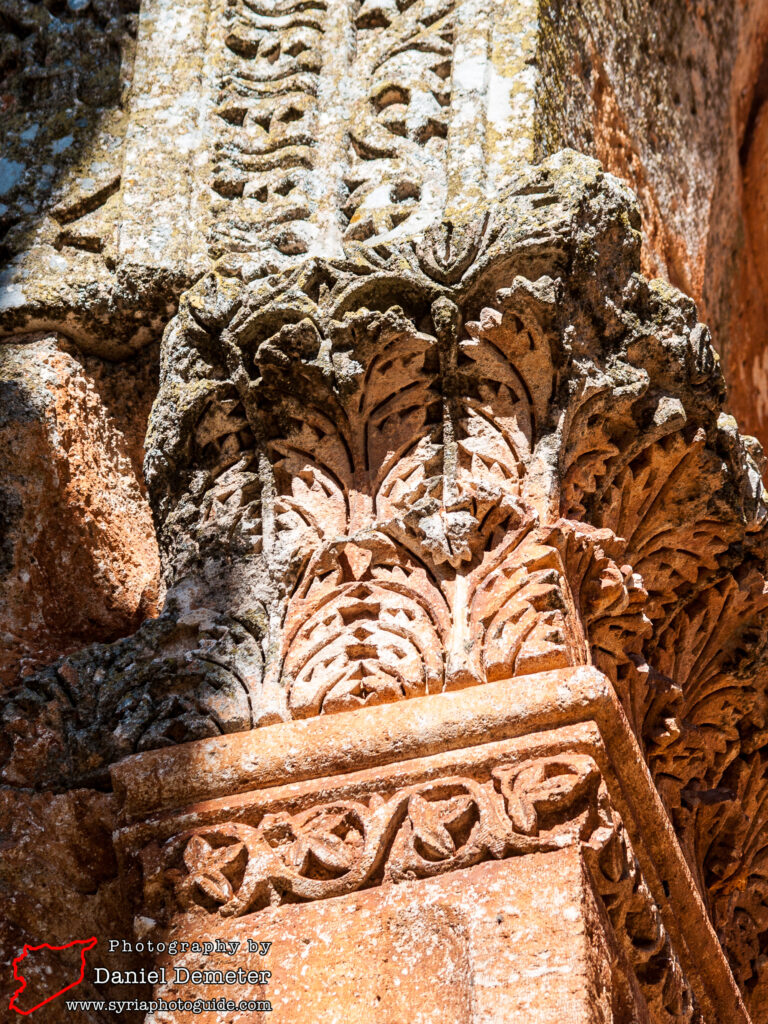
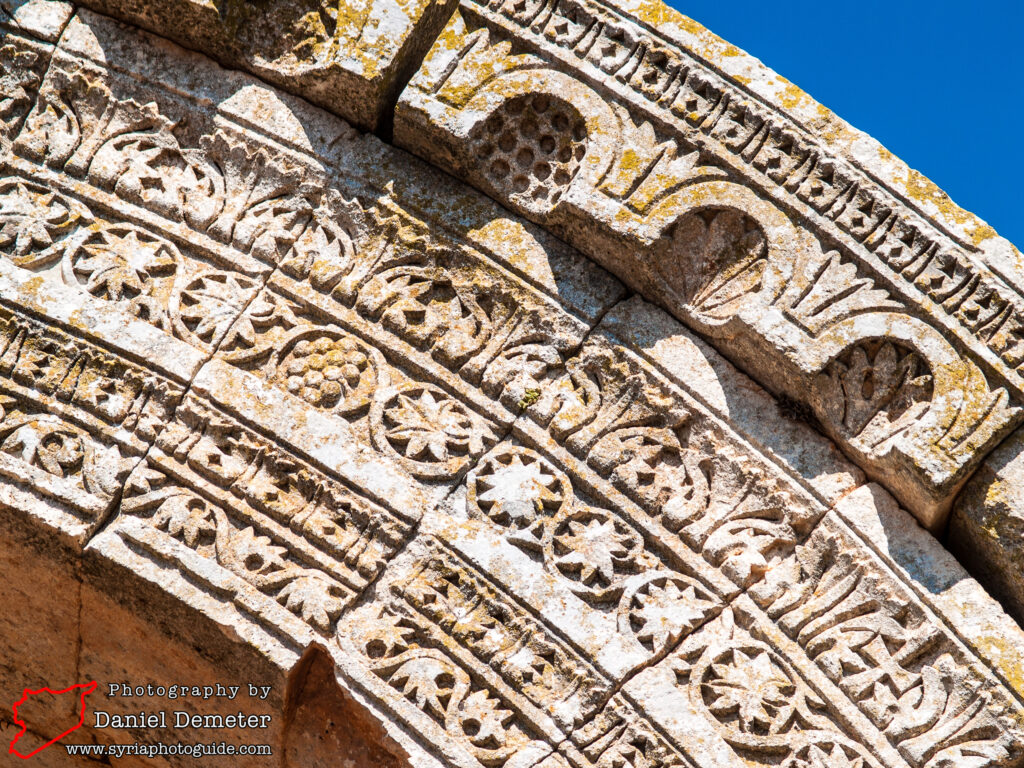
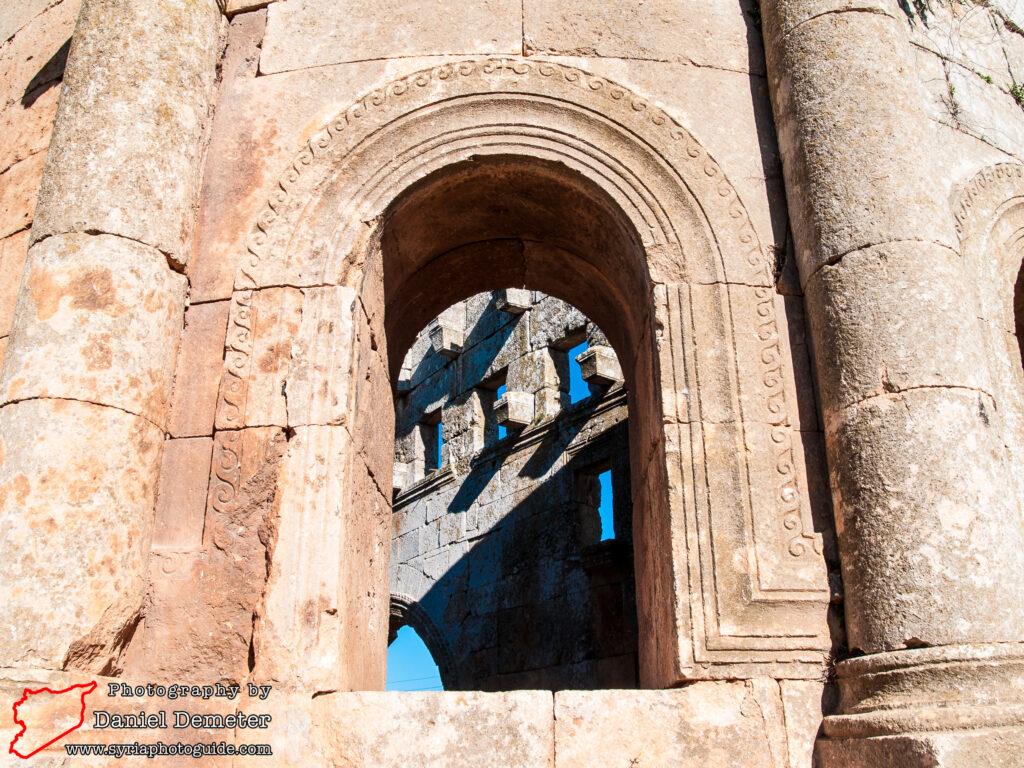
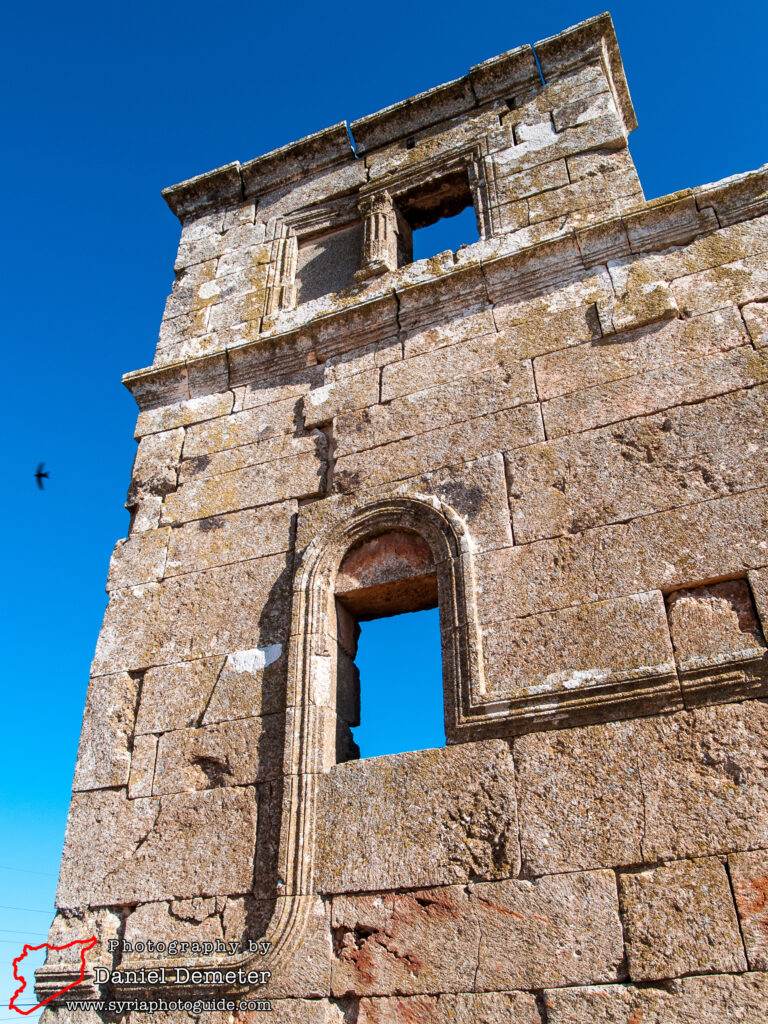
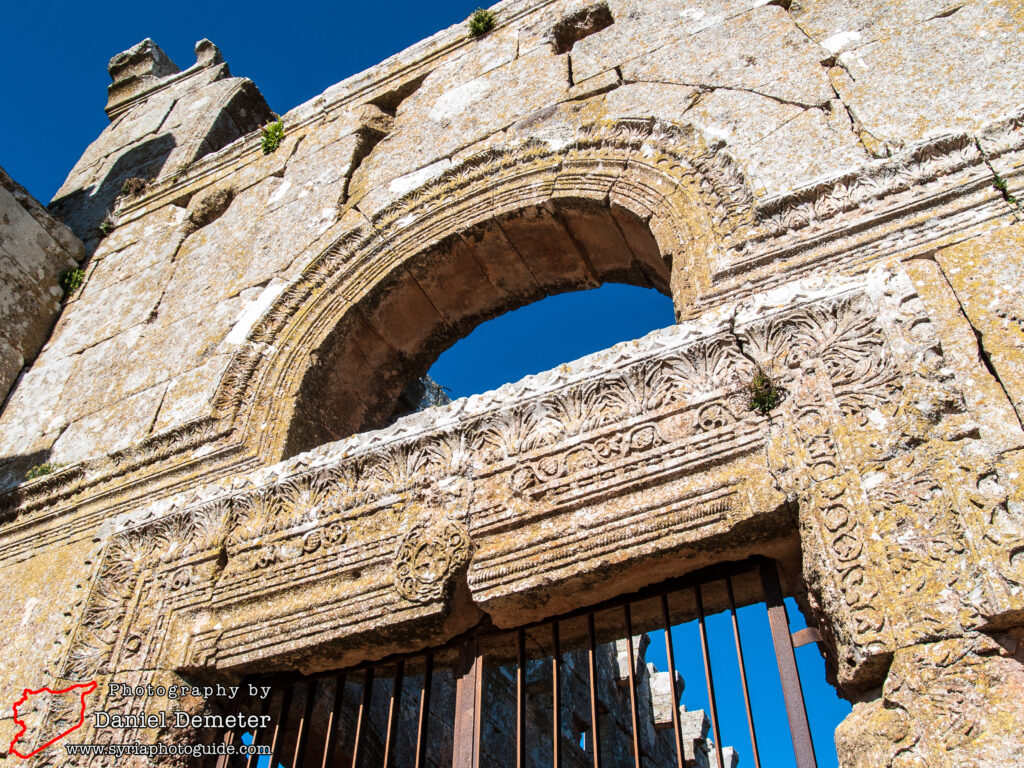

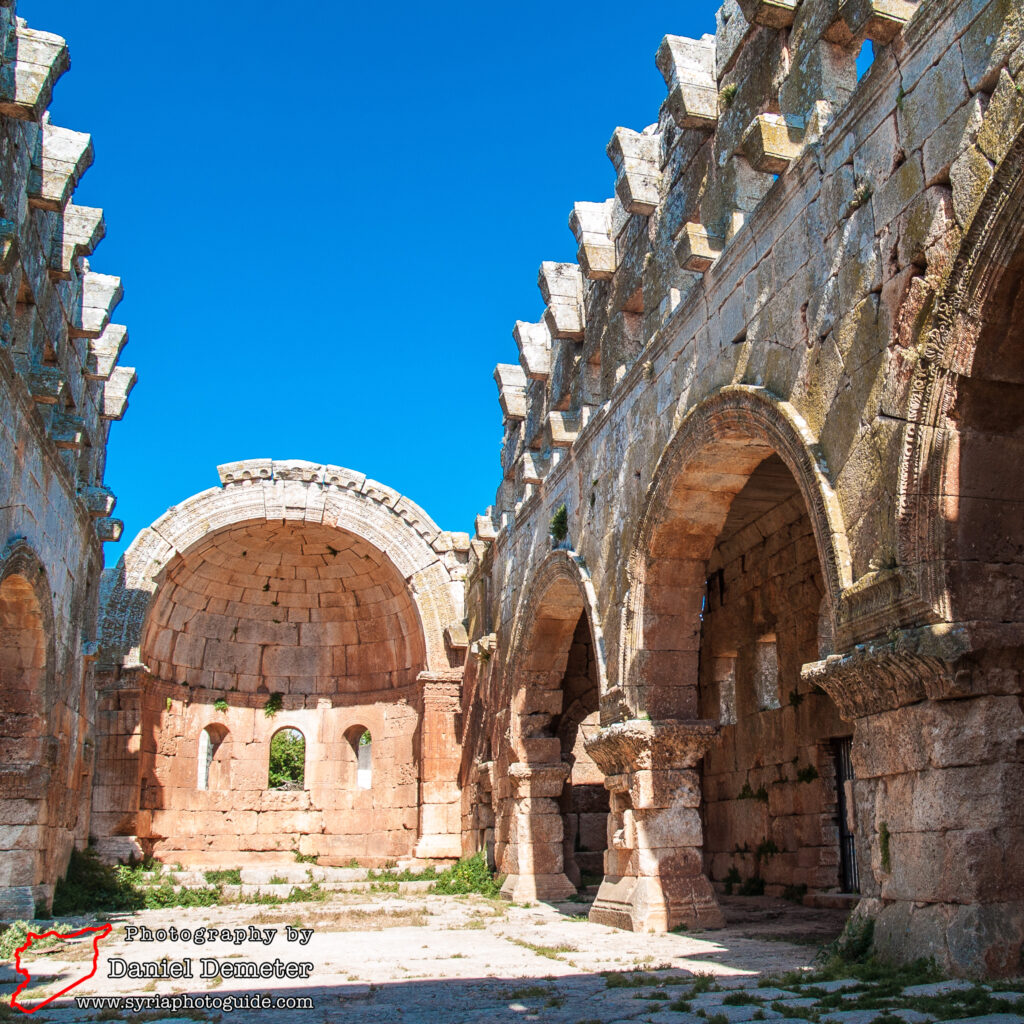
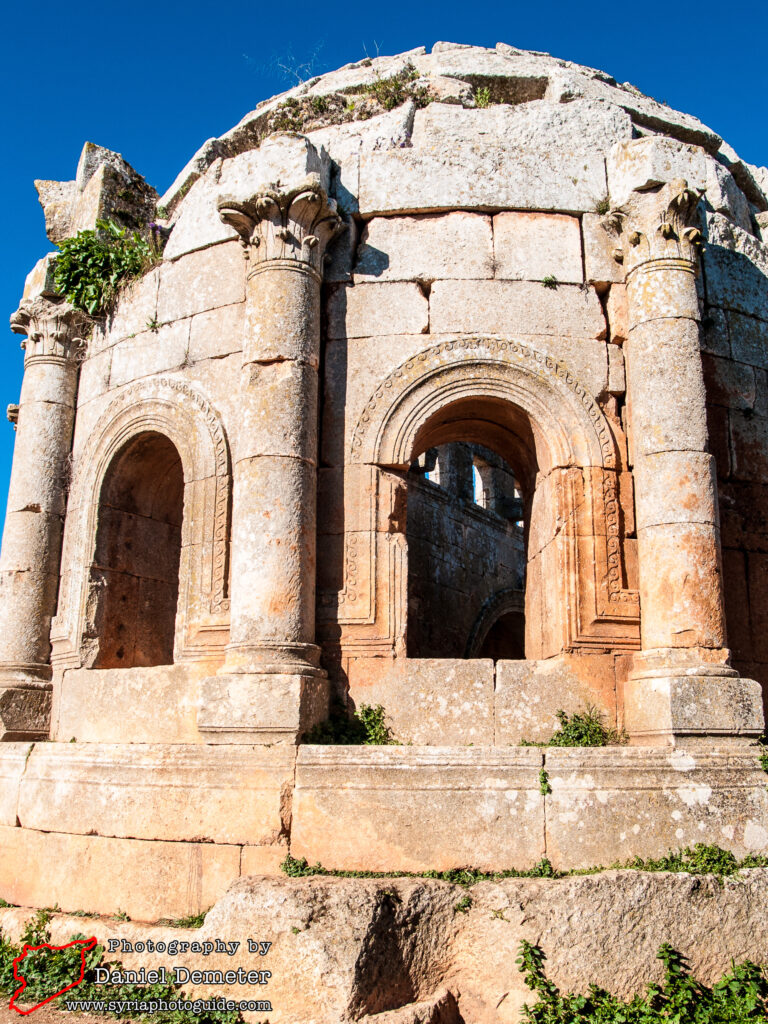
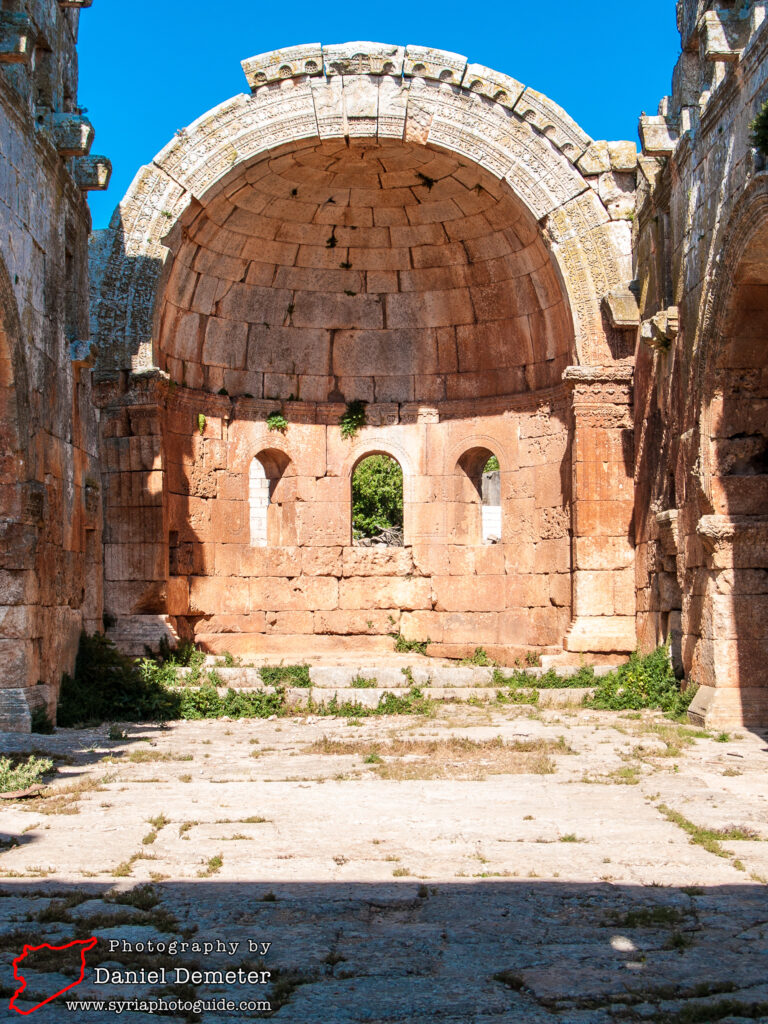
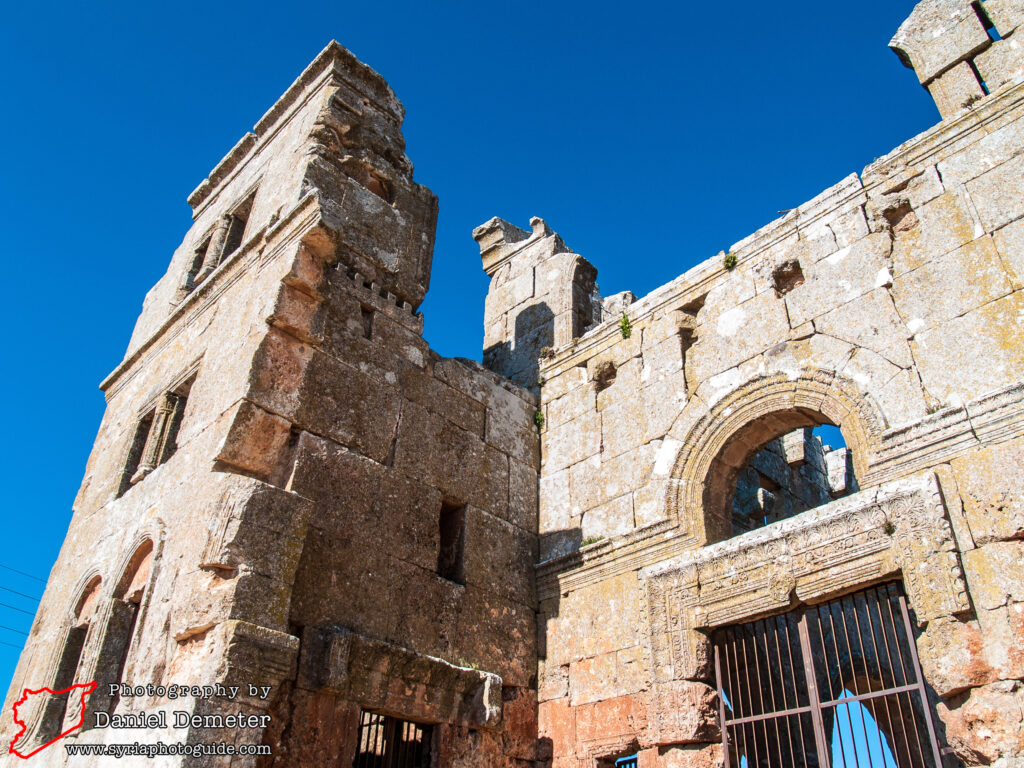

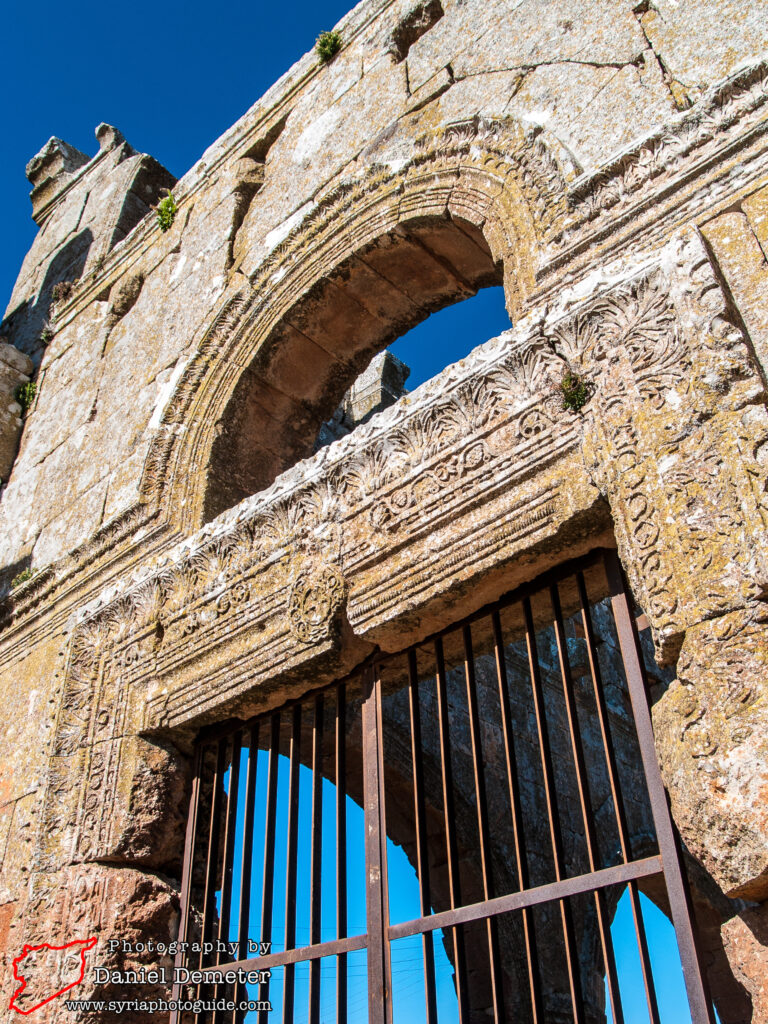
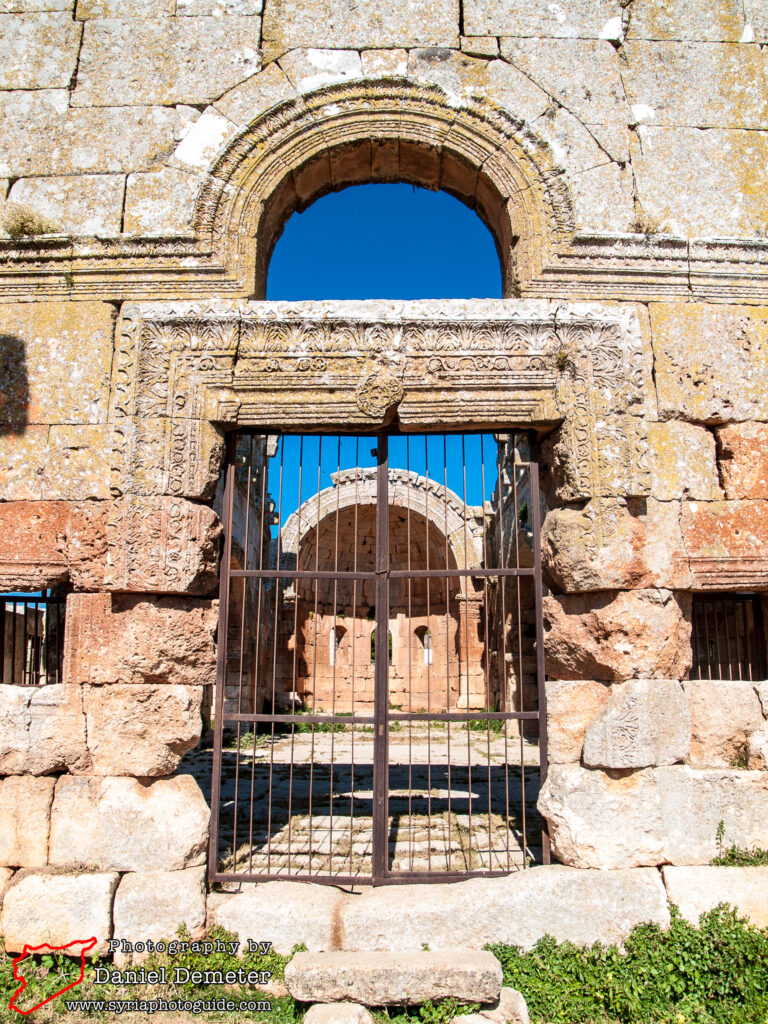
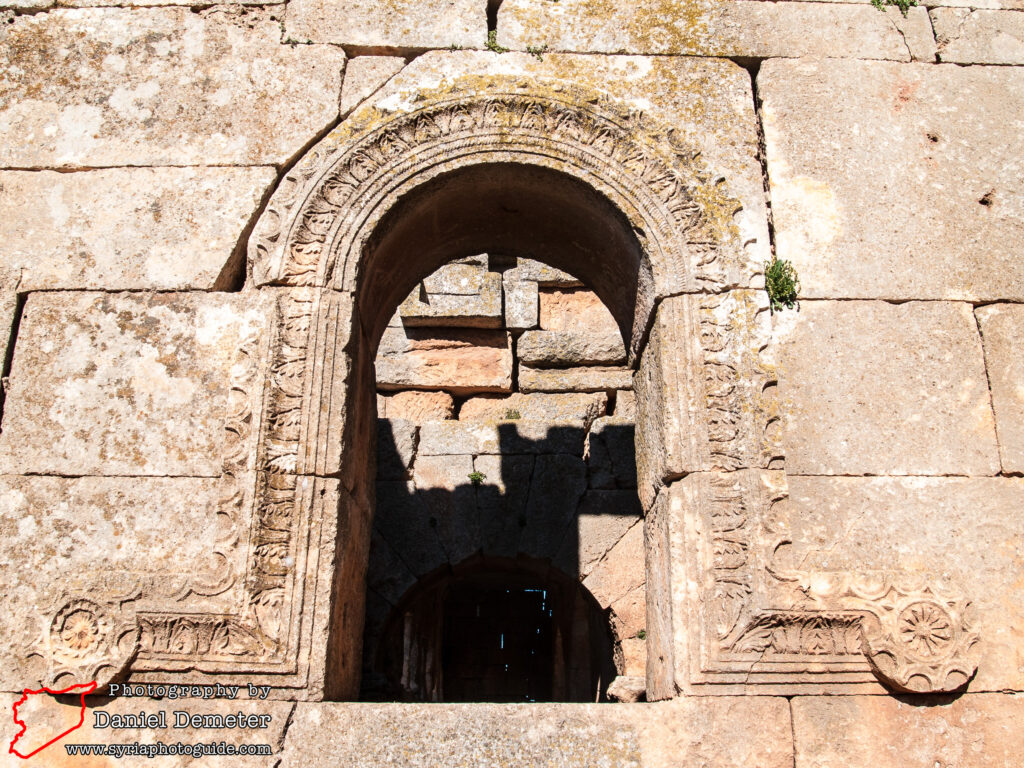
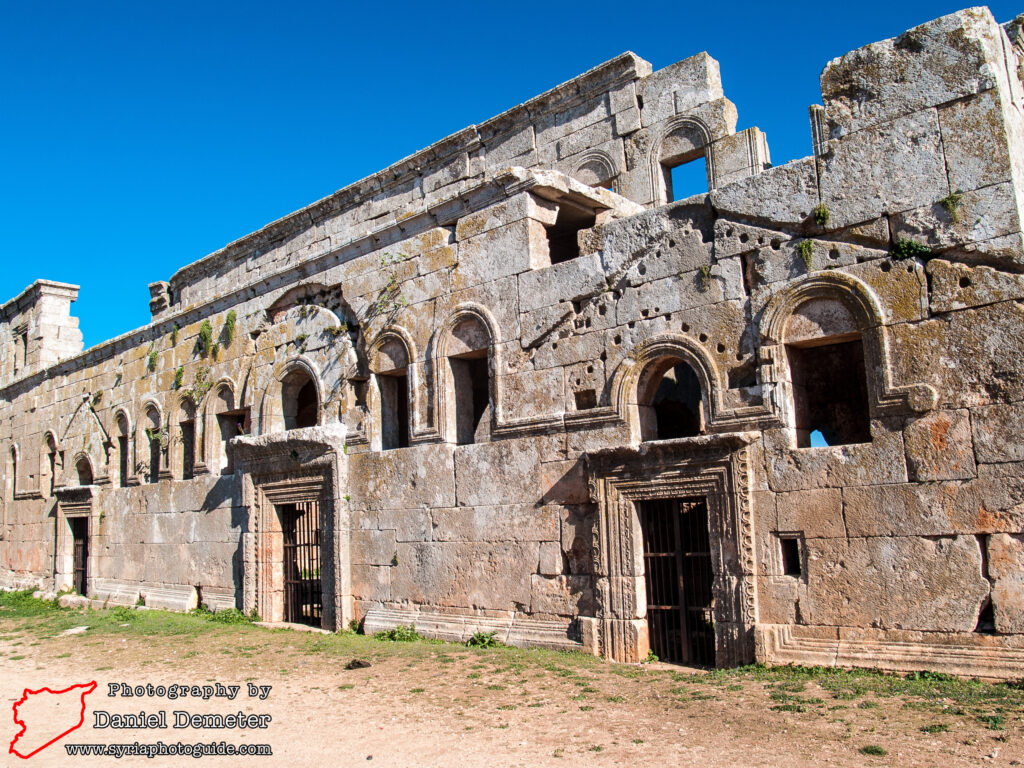
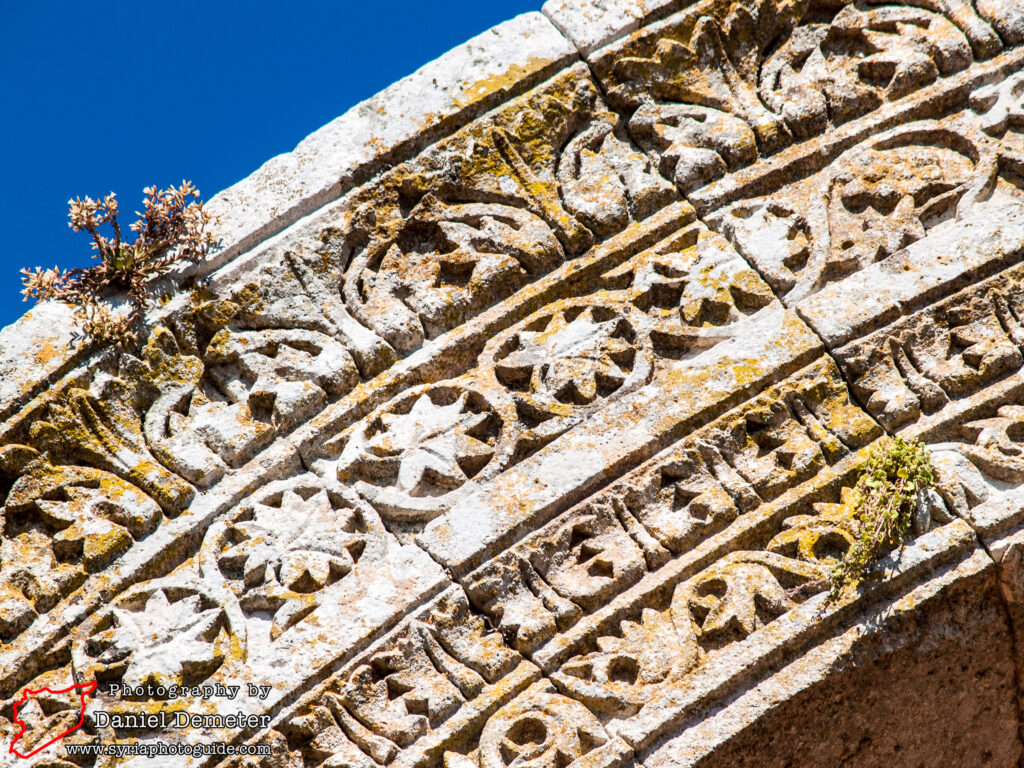
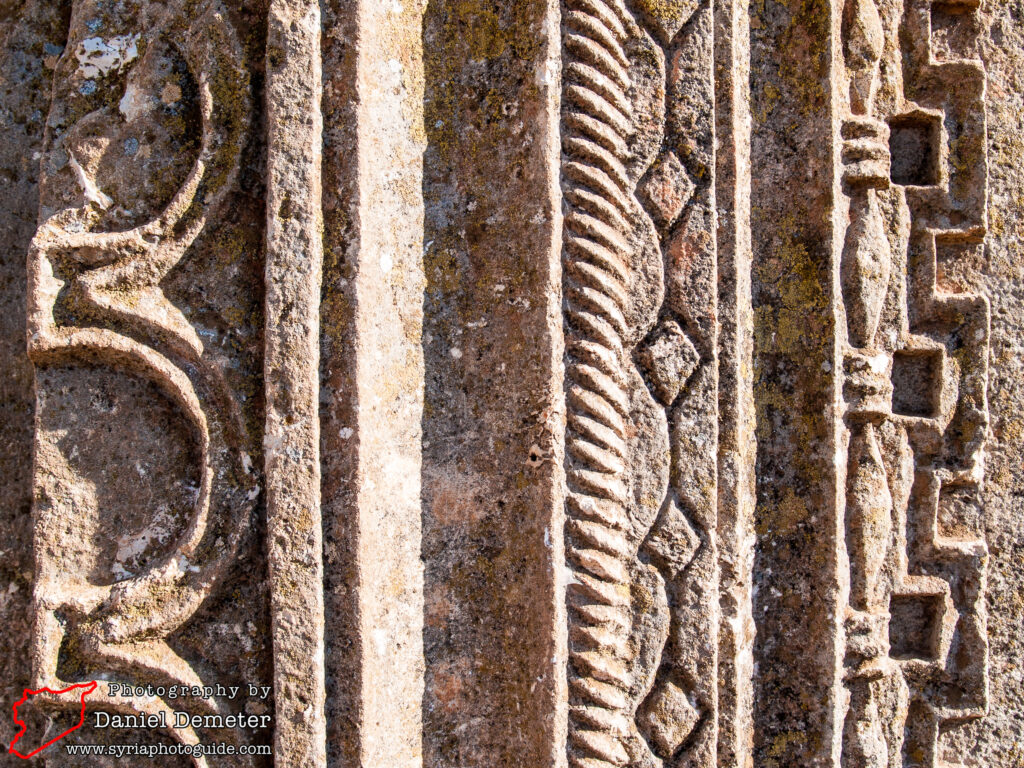
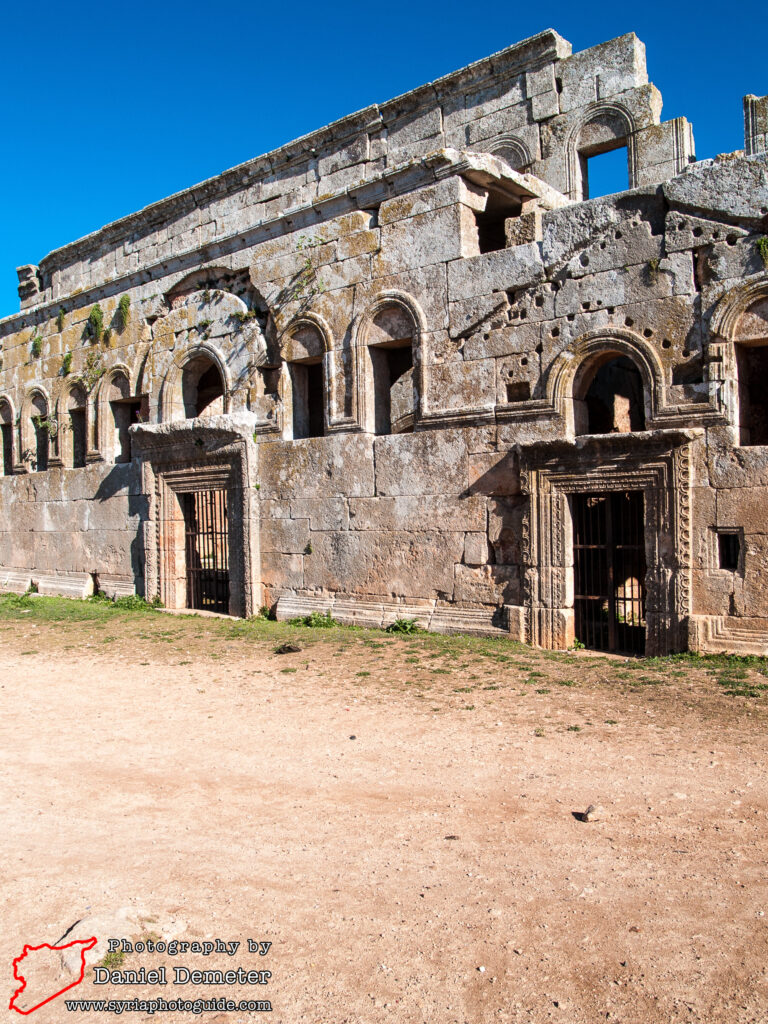
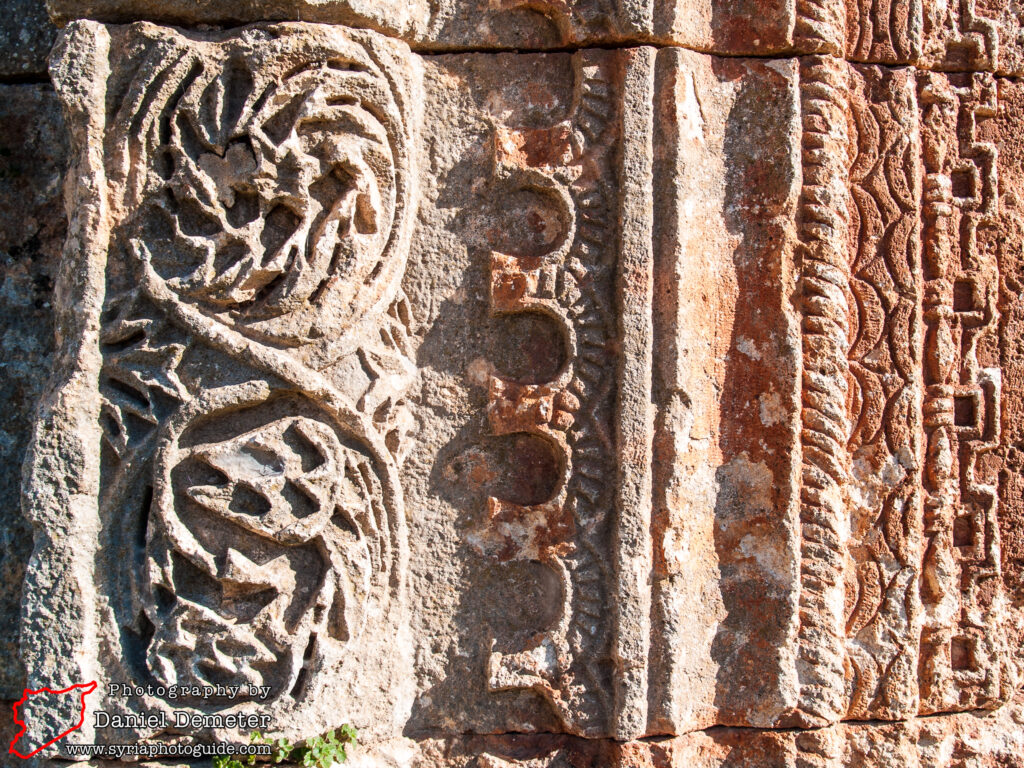
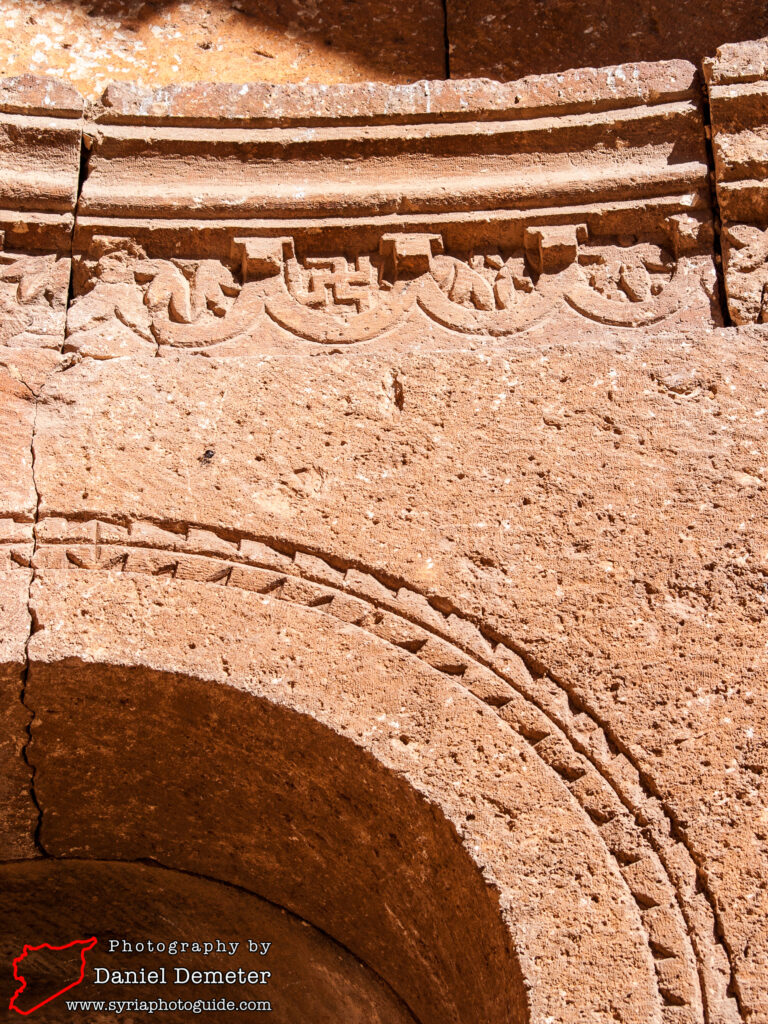
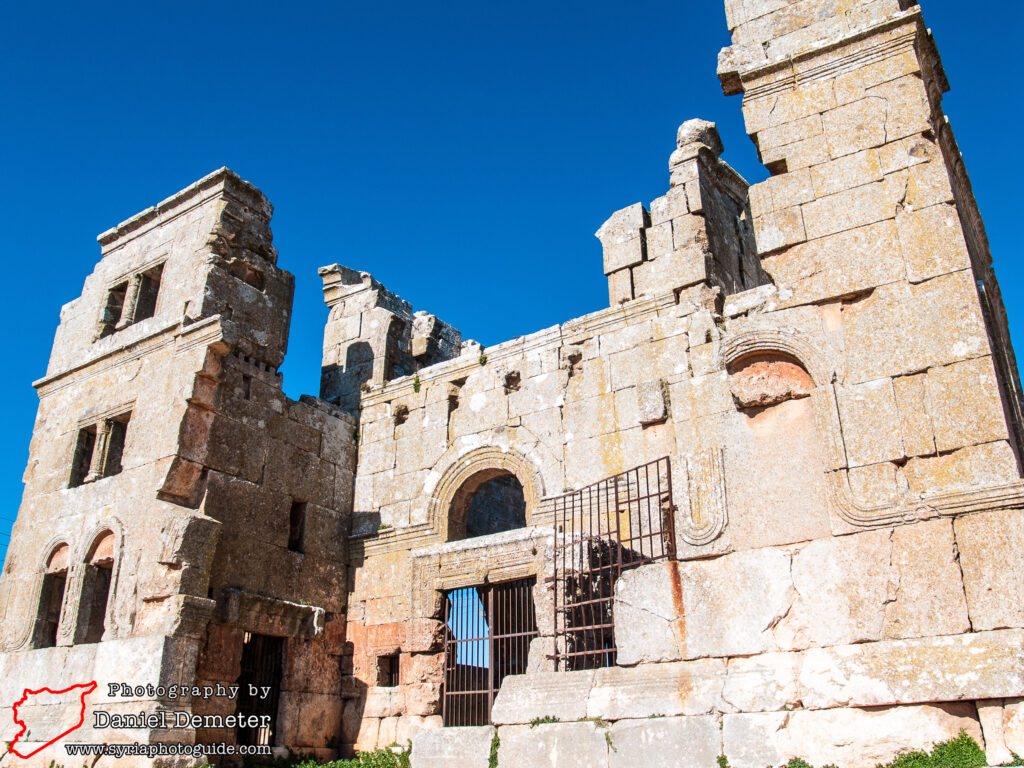
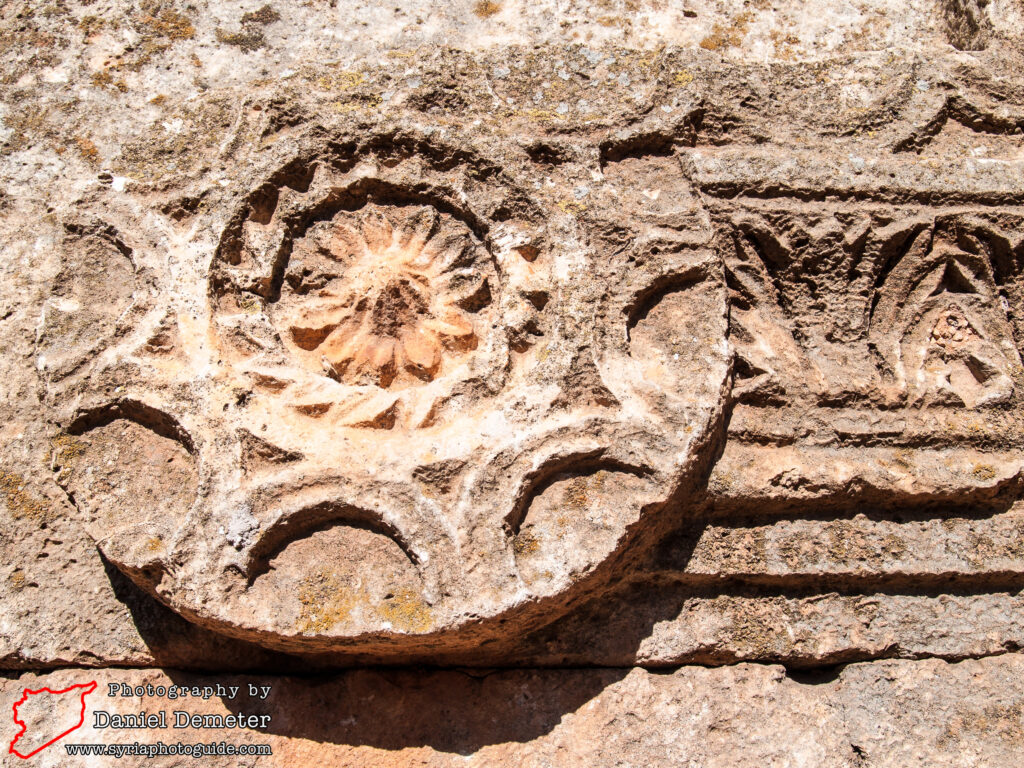
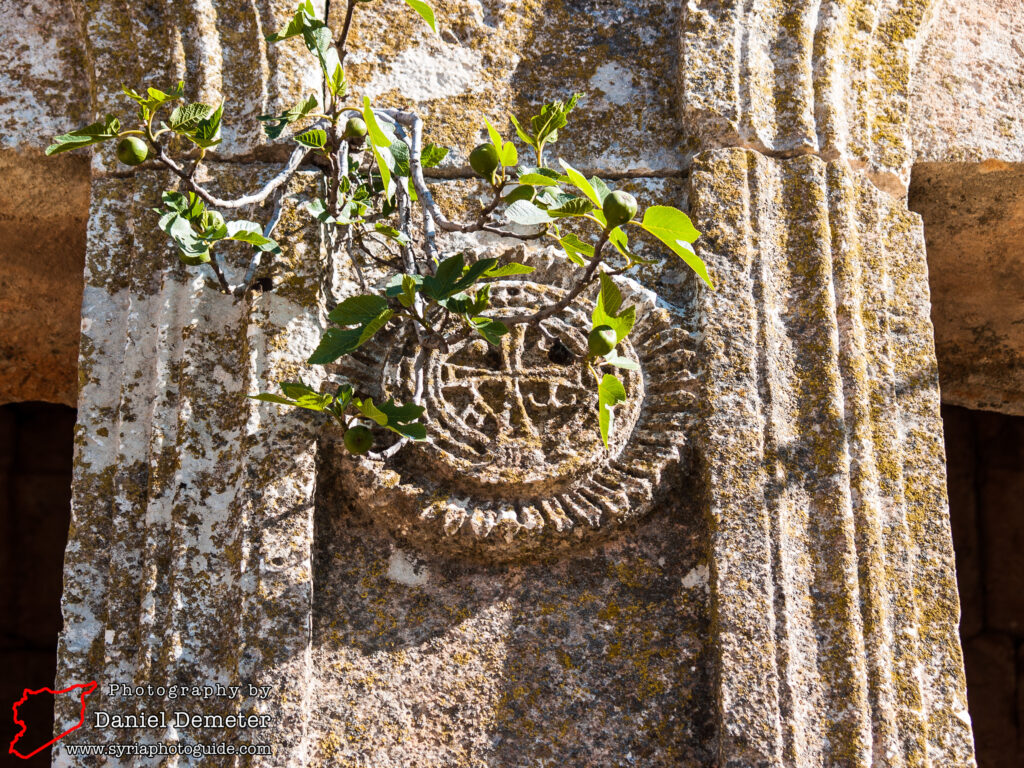
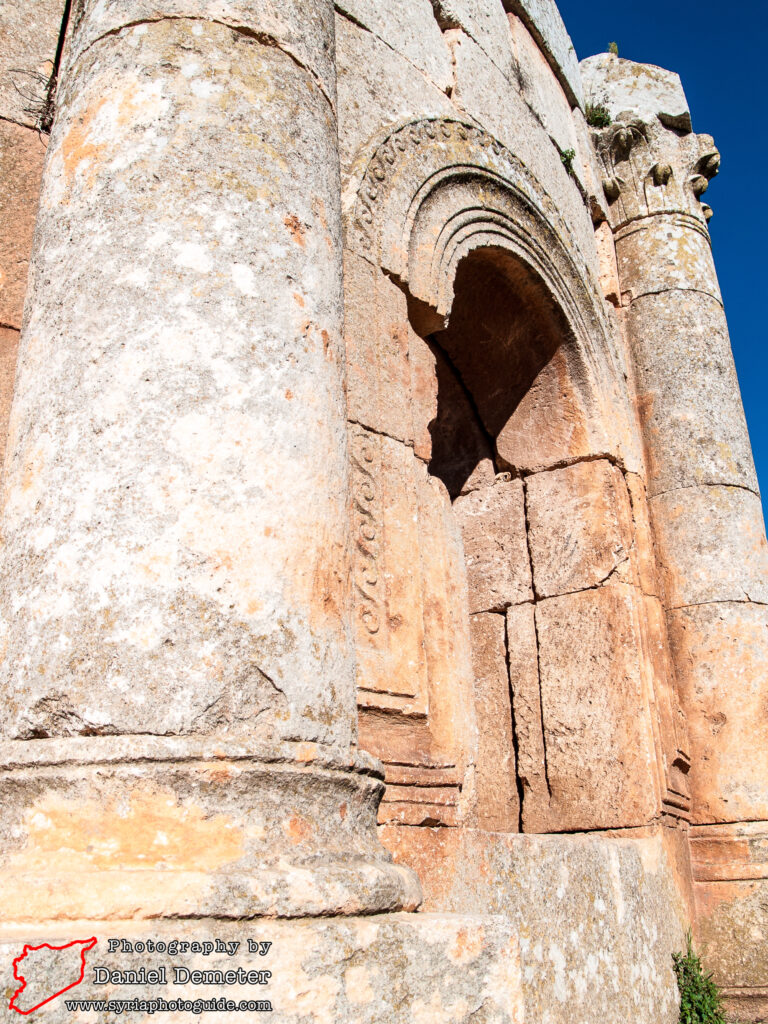
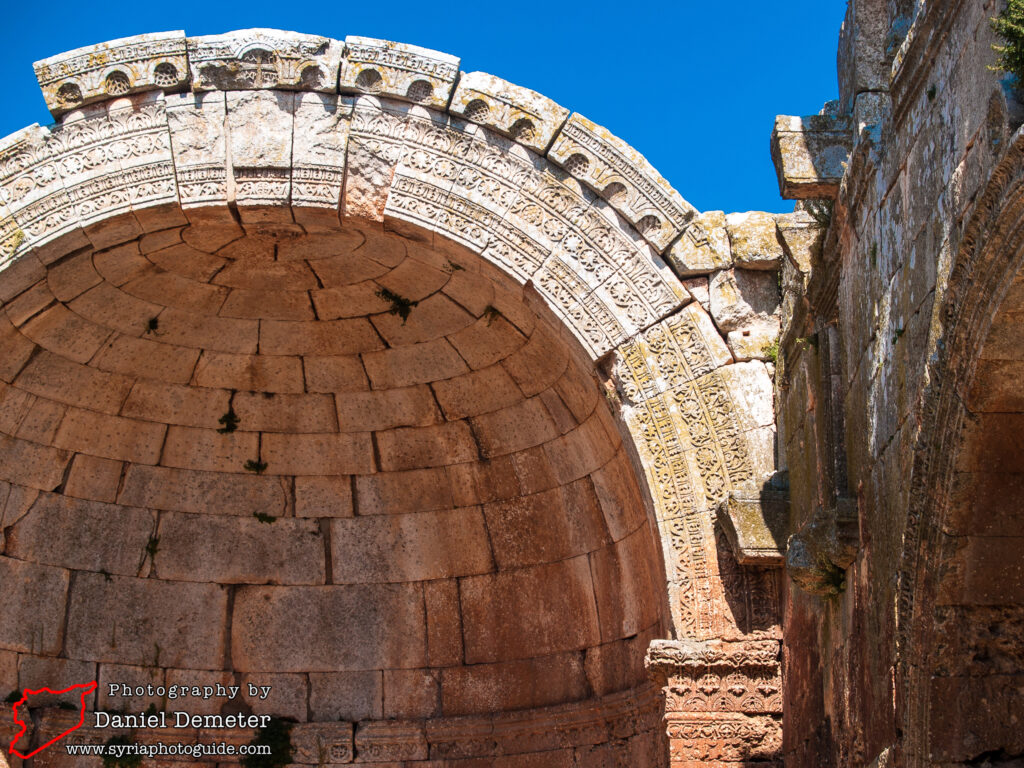
Getting There: There is no regular public transportation into the region of Jebel al-Aala (جبل الأعلى), presenting a challenge for visitors. There are two main routes for getting into the area.
The most common route is via the town of Harem (حارم), to the northwest, which has regular microbus connections with Aleppo (حلب) and Idleb (إدلب). Harem (حارم) is approximately ten kilometers from Banabel (بنابل), the northernmost site in the region, and about fifteen kilometers from Qalb Lozeh (قلب لوزة). The road leading up to Jebel al-Aala (جبل الأعلى) begins about two kilometers to the east of Harem (حارم), on the road coming into town from Aleppo (حلب). From there, it should be possible to hitchhike the remaining eight kilometers south to Banabel (بنابل), but traffic is relatively light. The alternative would be to hire a private driver in Harem (حارم).
The less commonly traveled route, which is actually closer to the main site of Qalb Lozeh (قلب لوزة), is via the town of Qurqaniya (قورقنيا), to the east of Jebel al-Aala (جبل الأعلى). Qurqaniya (قورقنيا) has semi-frequent microbus connections with Aleppo (حلب) and Idleb (إدلب) and is about six kilometers southeast of Qalb Lozeh (قلب لوزة). The main road through Qurqaniya (قورقنيا) continues west, then northwest across a small valley. On the opposite end of the valley a steep road ascends to Jebel al-Aala (جبل الأعلى). Qalb Lozeh (قلب لوزة) is found to the left directly beyond this ascent. Traffic seems a bit more frequent on this route, so hitchhiking should be possible, or a private driver could be hired in Qurqaniya (قورقنيا).
Once in Jebel al-Aala (جبل الأعلى), there are approximately eight sites of interest. With an early arrival to the region, they can all be visited in a full day of exploration on foot. Qalb Lozeh (قلب لوزة) is the largest village in the area and the most well-known site, so it may be preferable to start there, especially if traveling the Qurqaniya (قورقنيا) route. If traveling from Harem (حارم), it may be preferable to start at the northernmost site of Banabel (بنابل) and continue south from there.
Coordinates: 36°10’08.78″N / 36°34’50.94″E
Transliteration Variants: Qalb Loze, Qalb Loza, Qalb Lozah
Rating: 7 / 10
